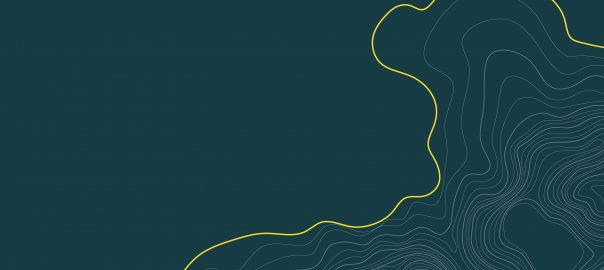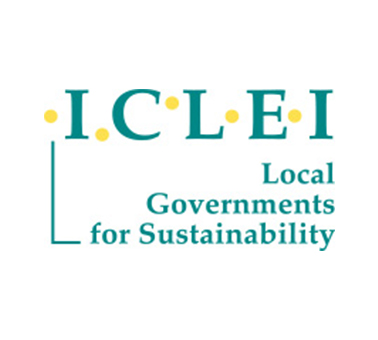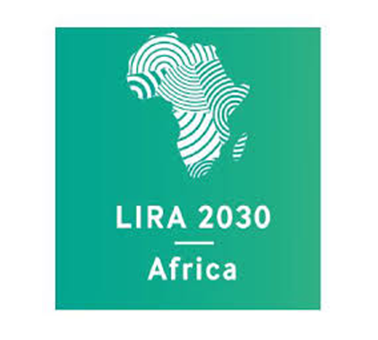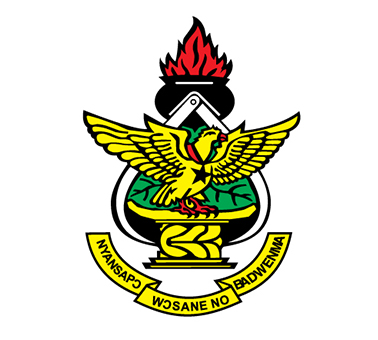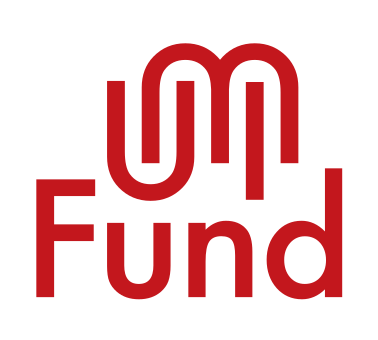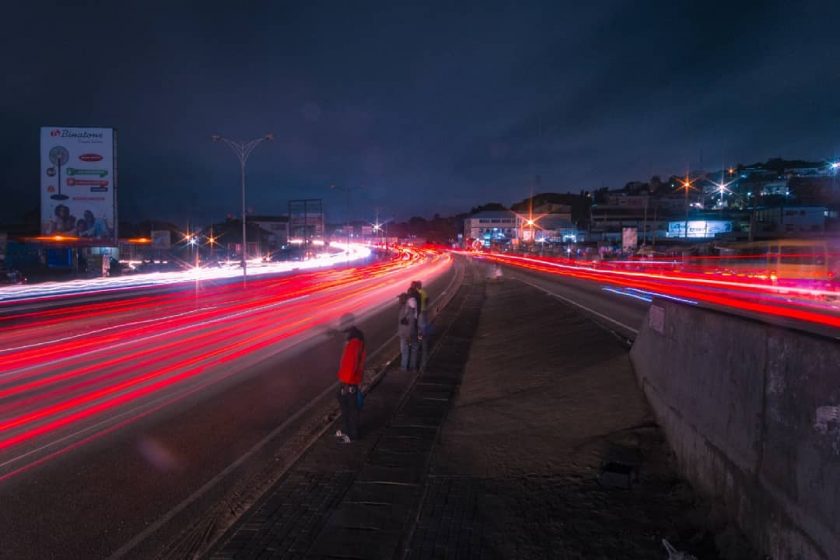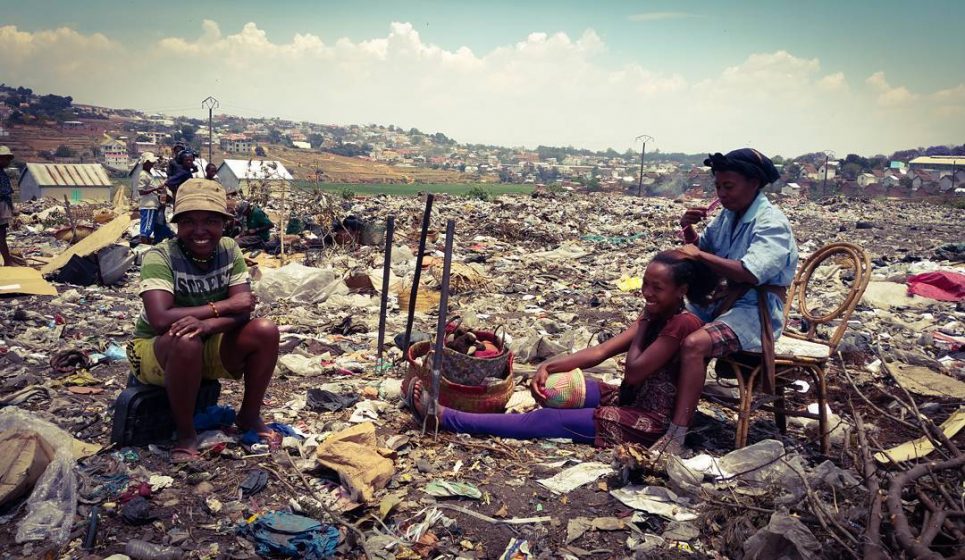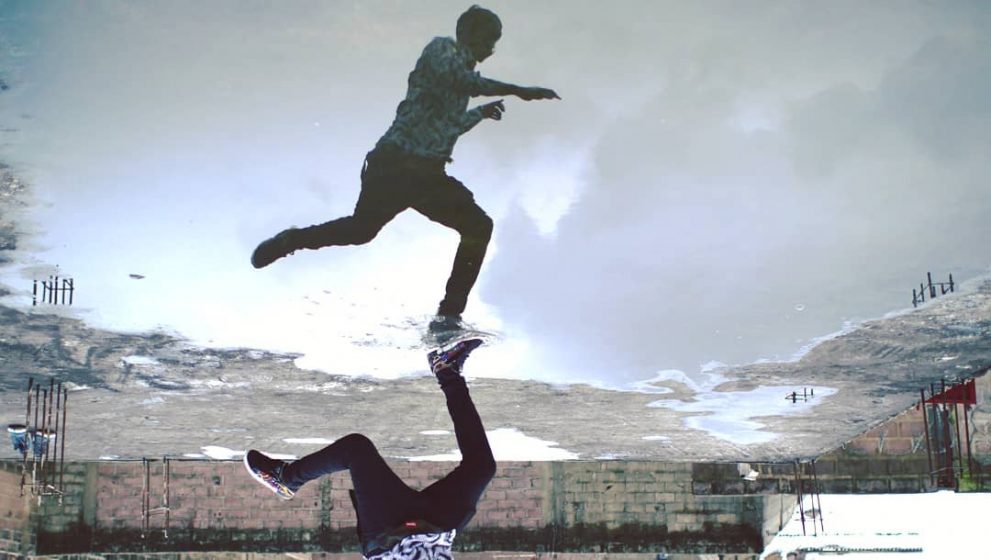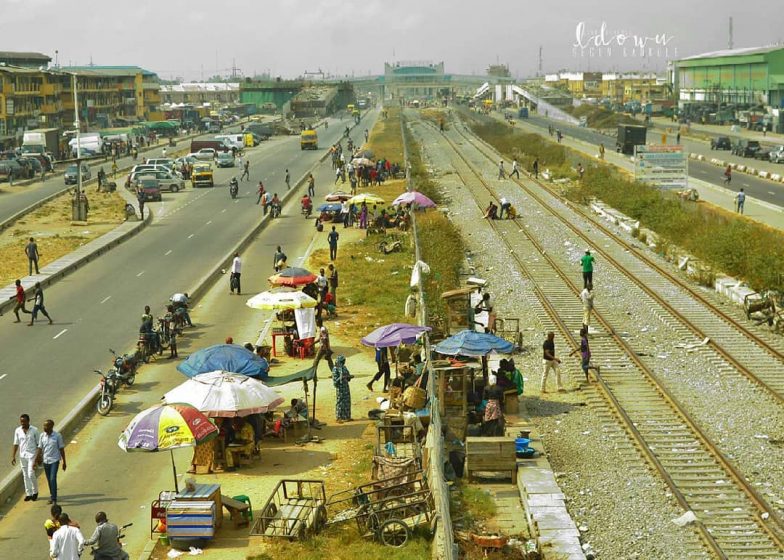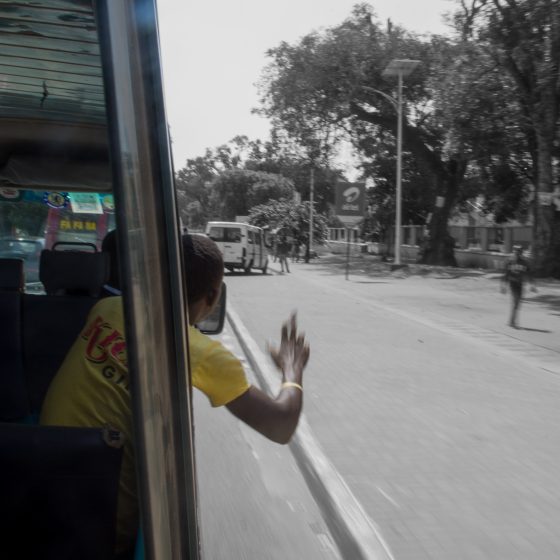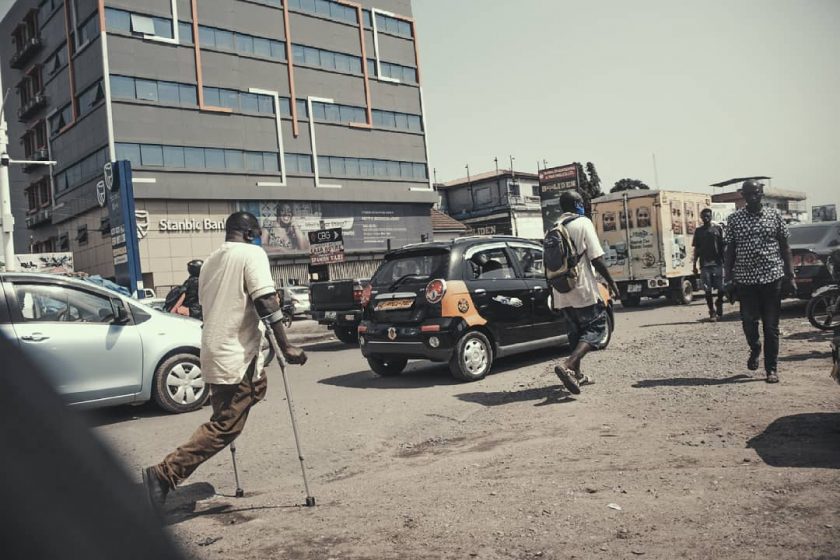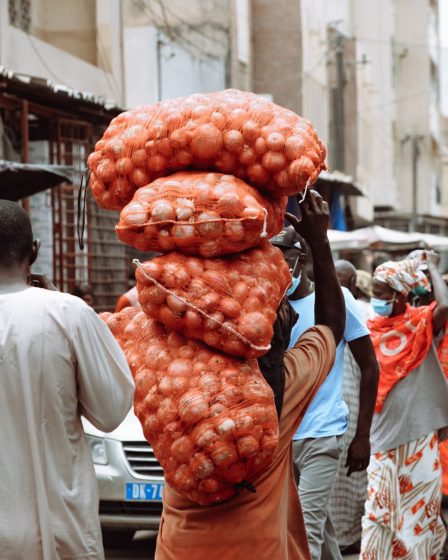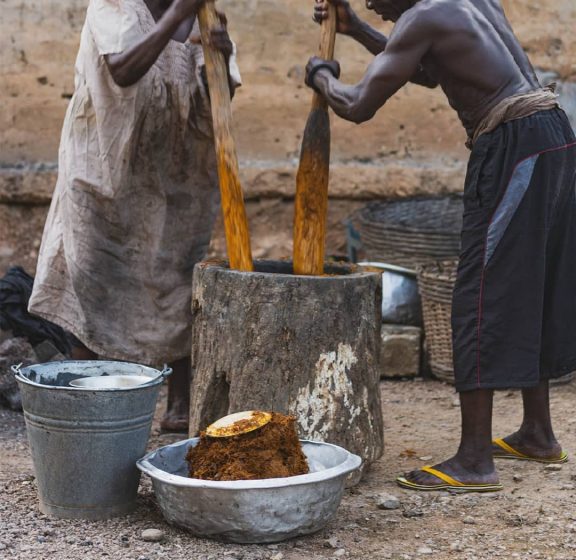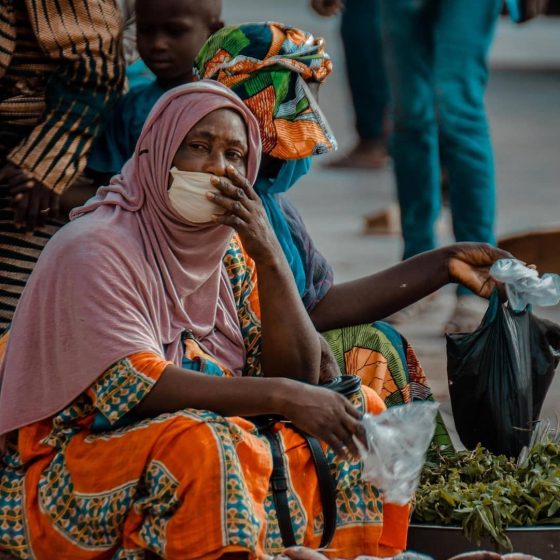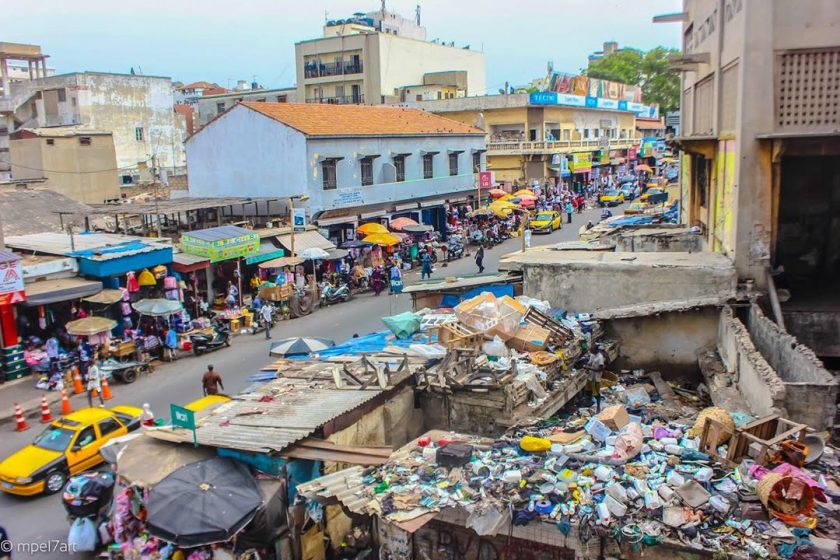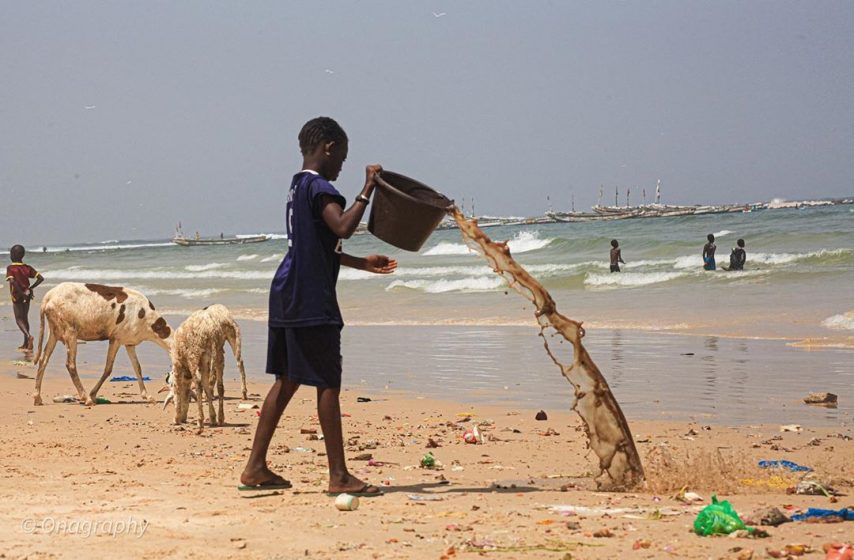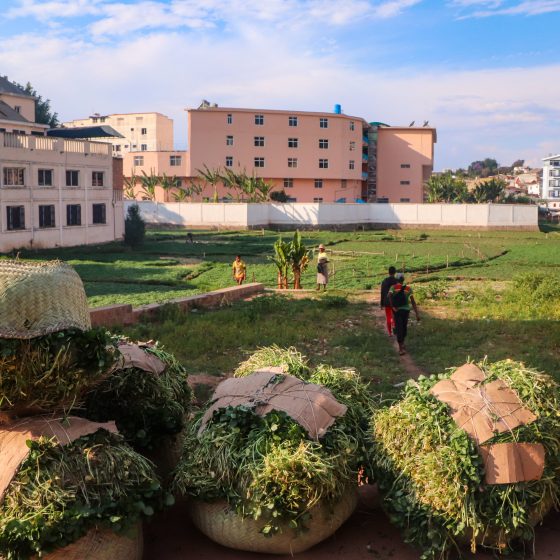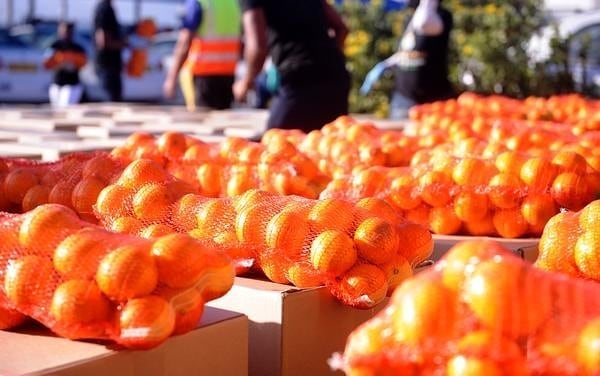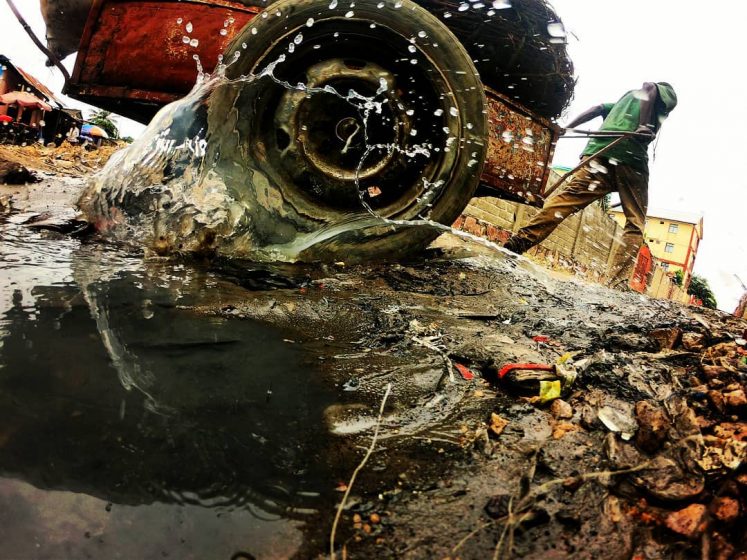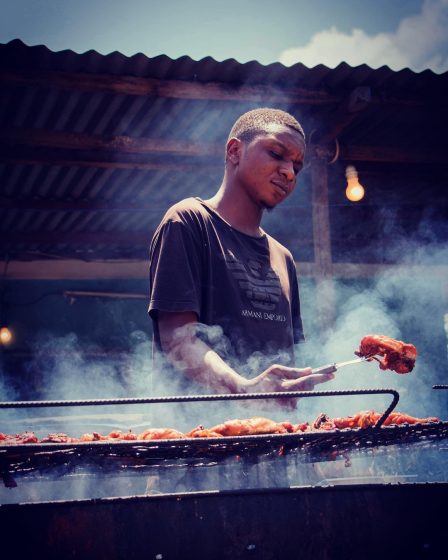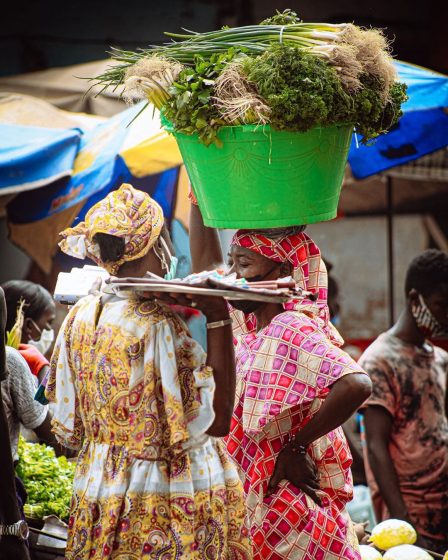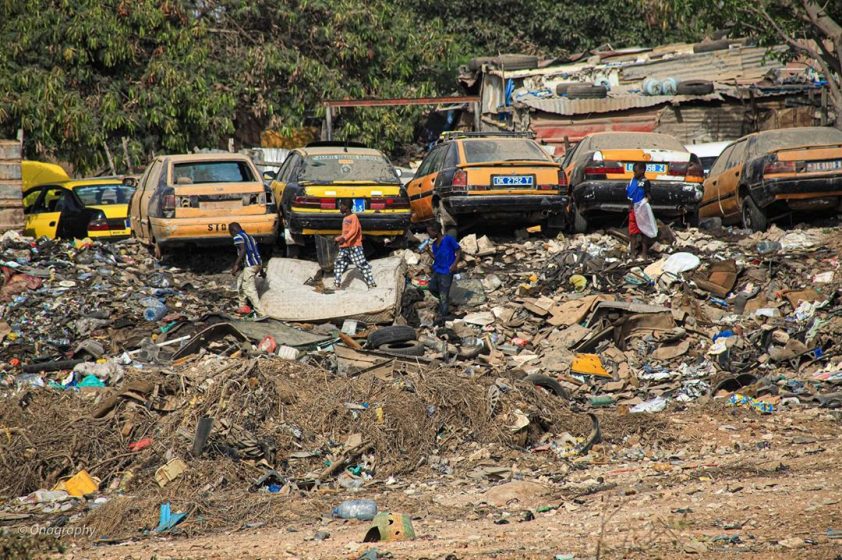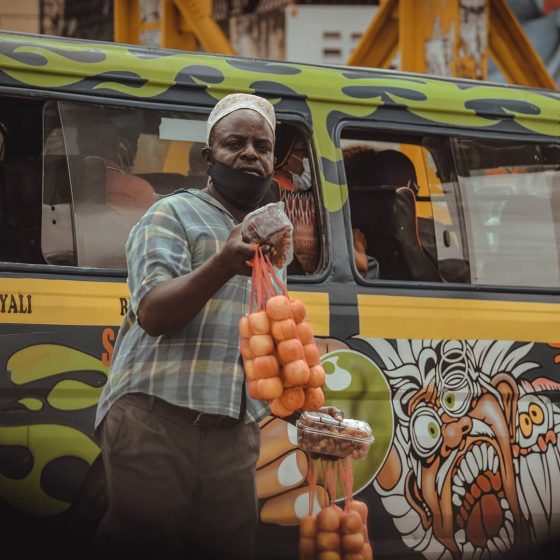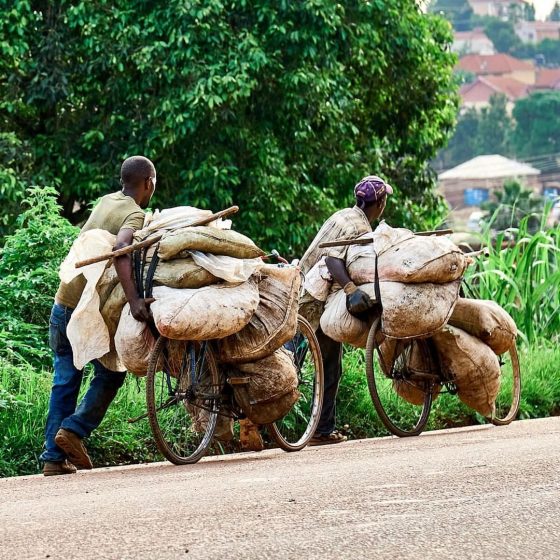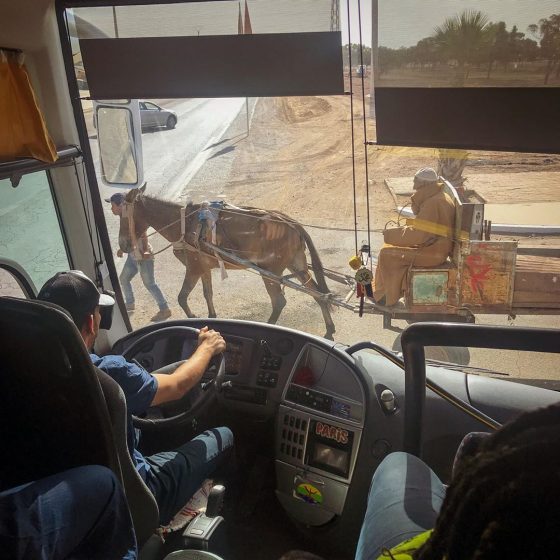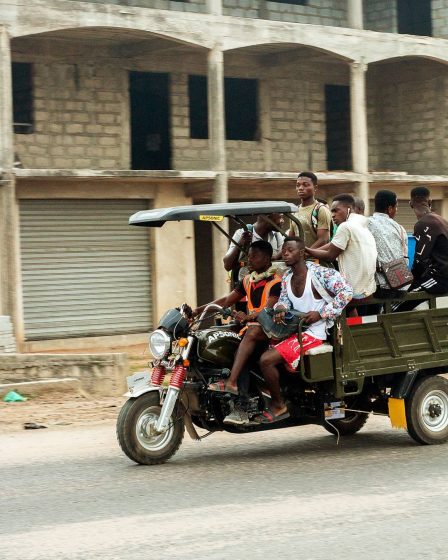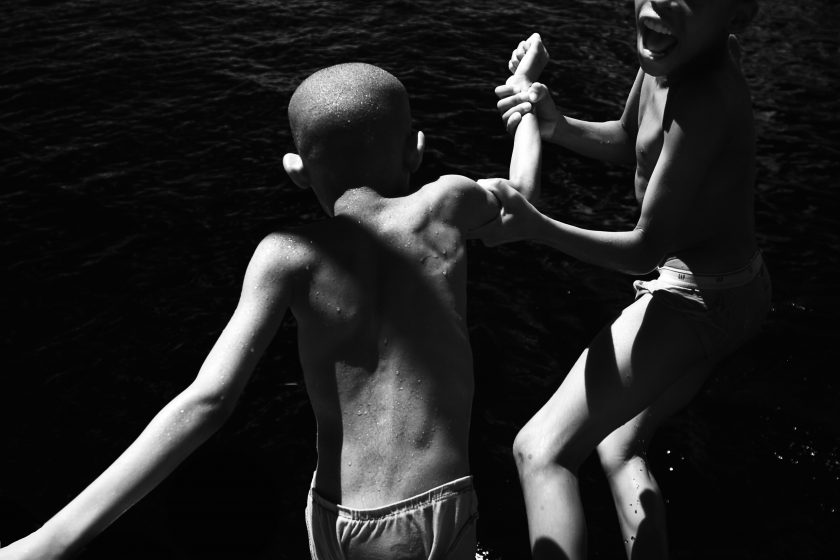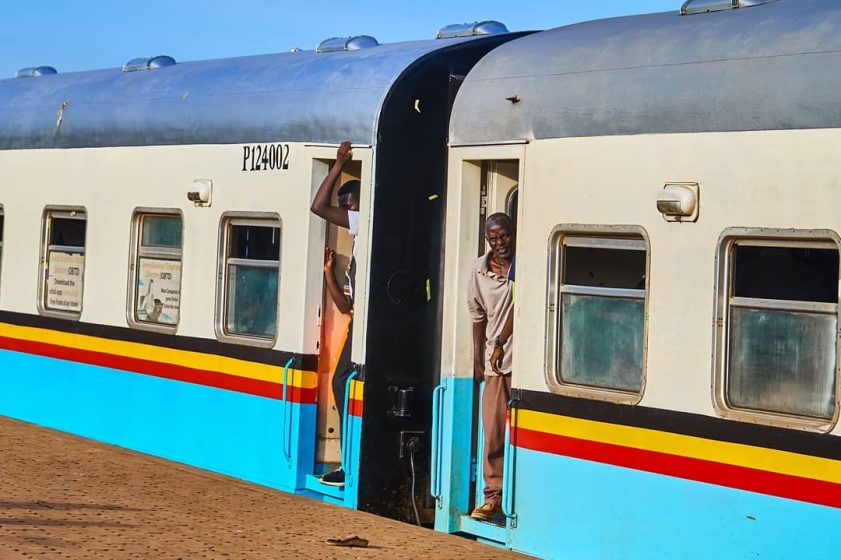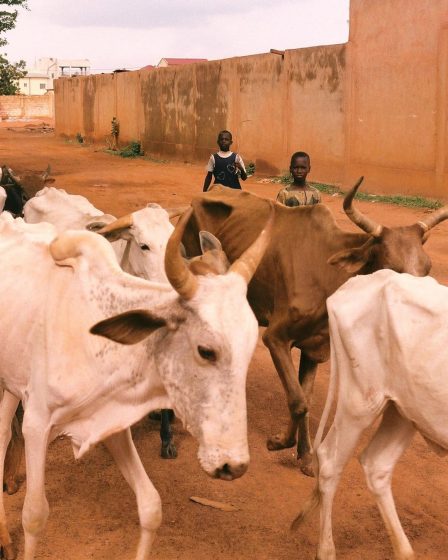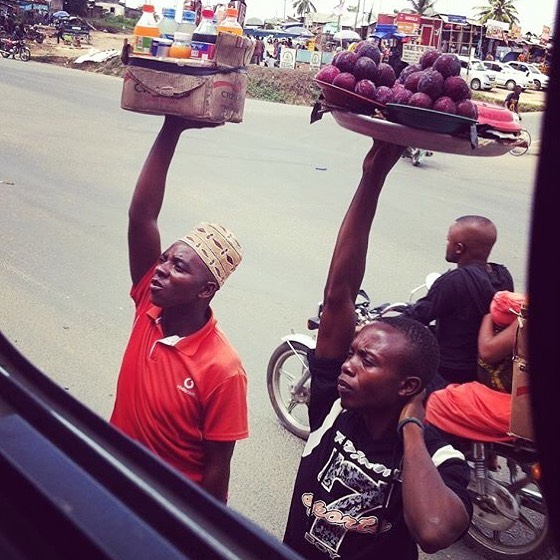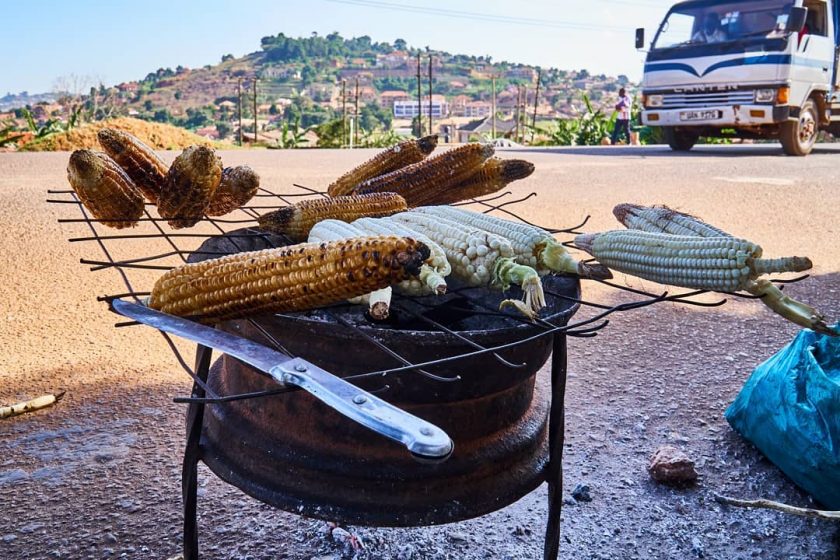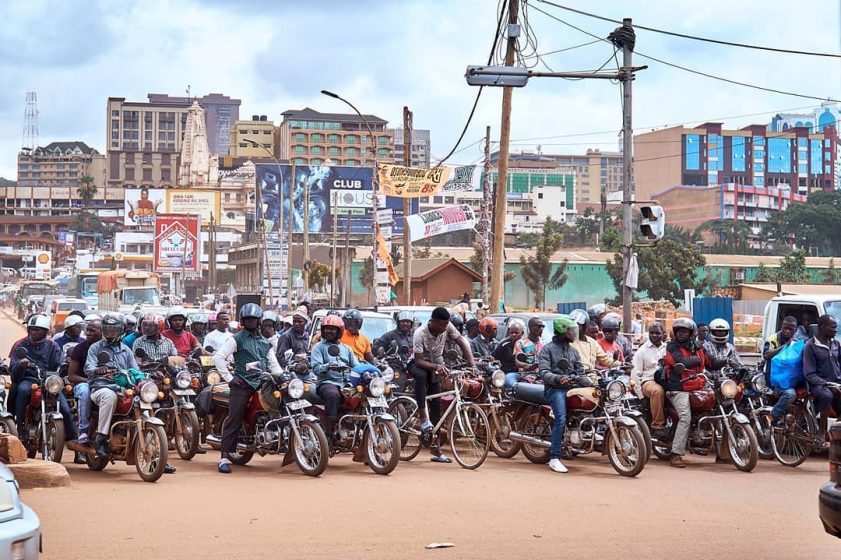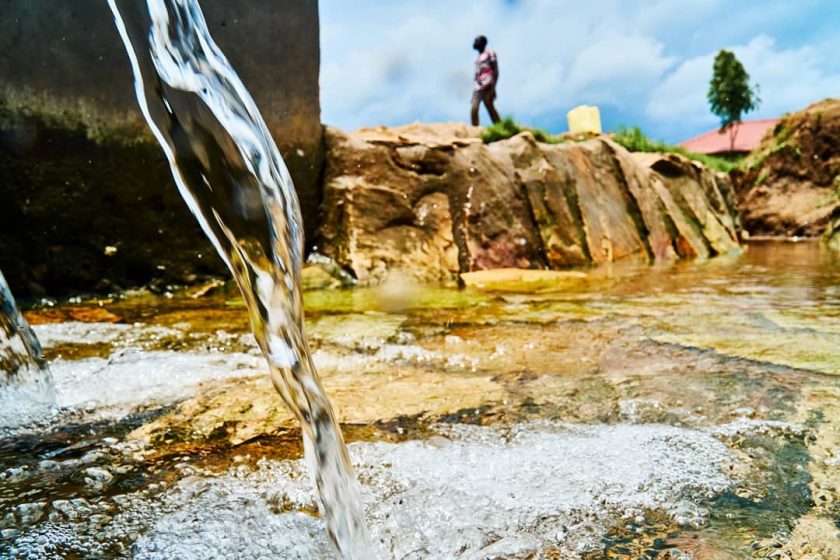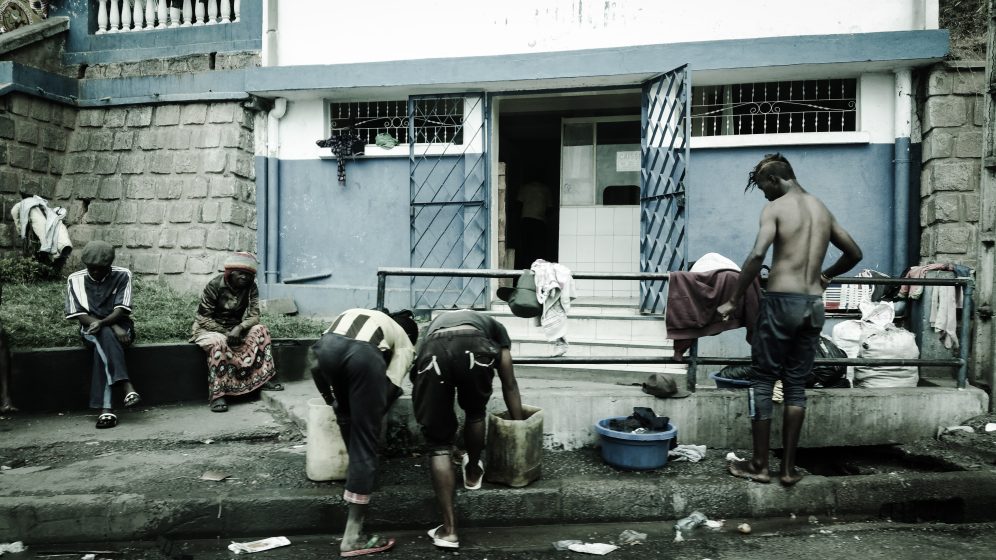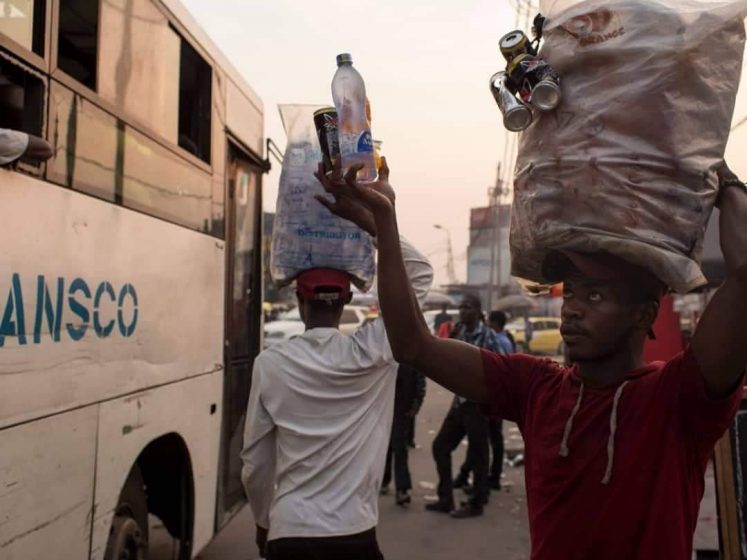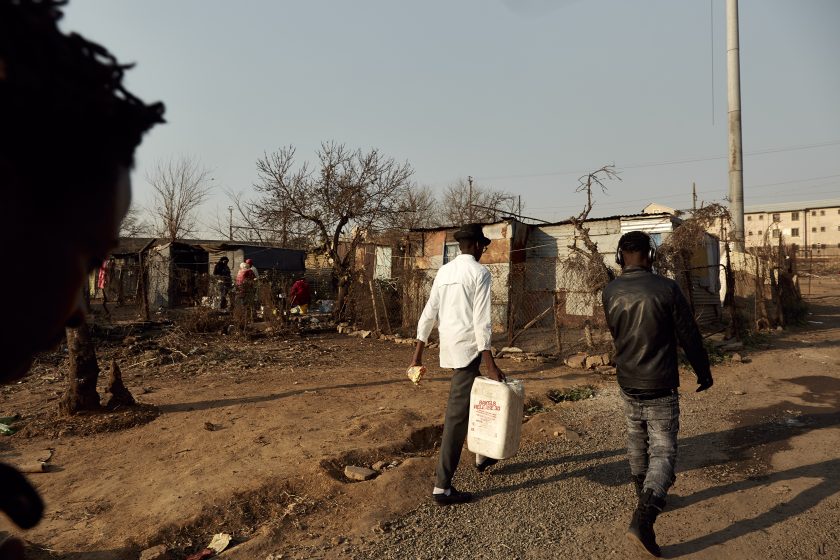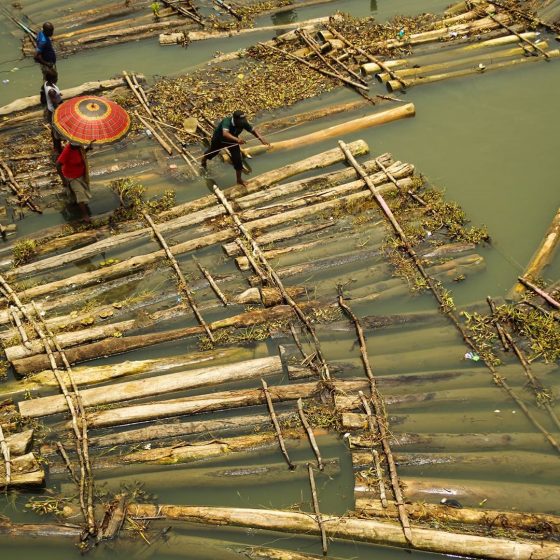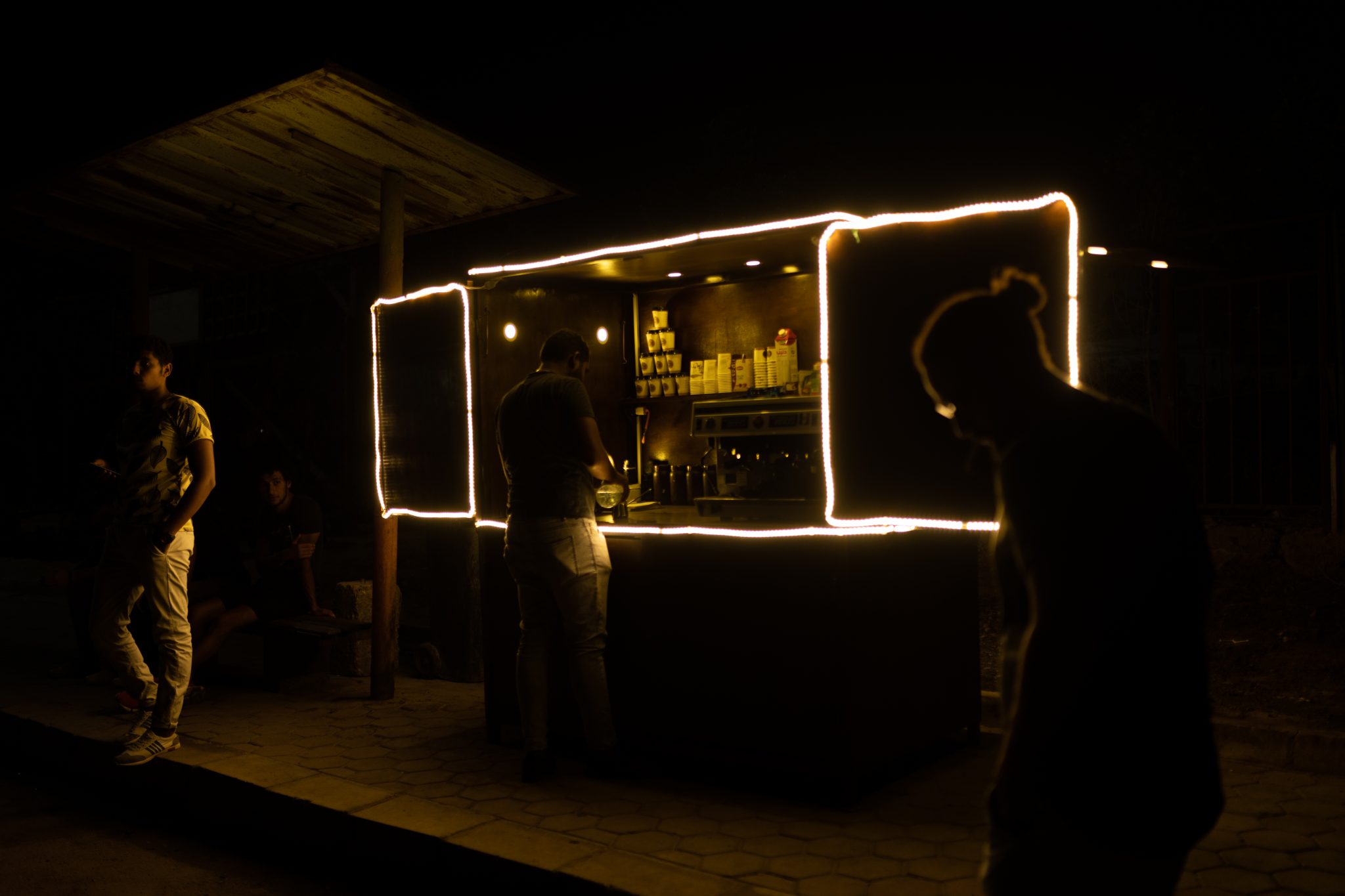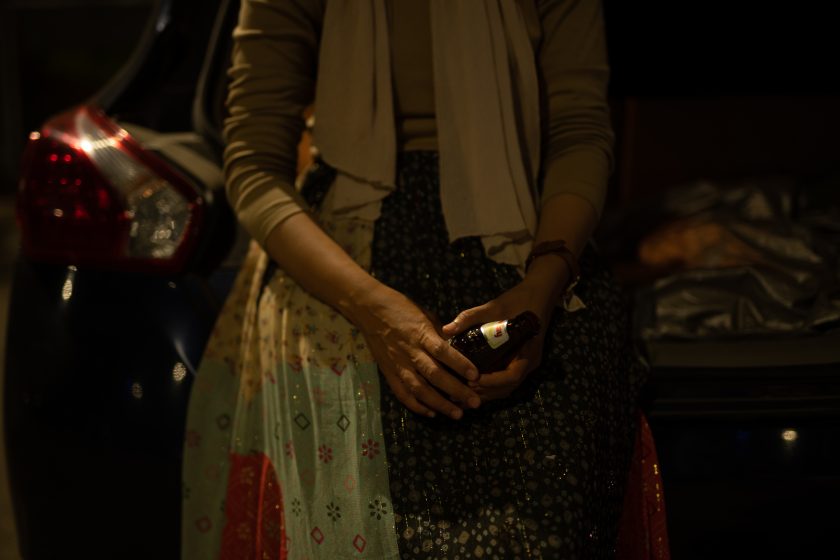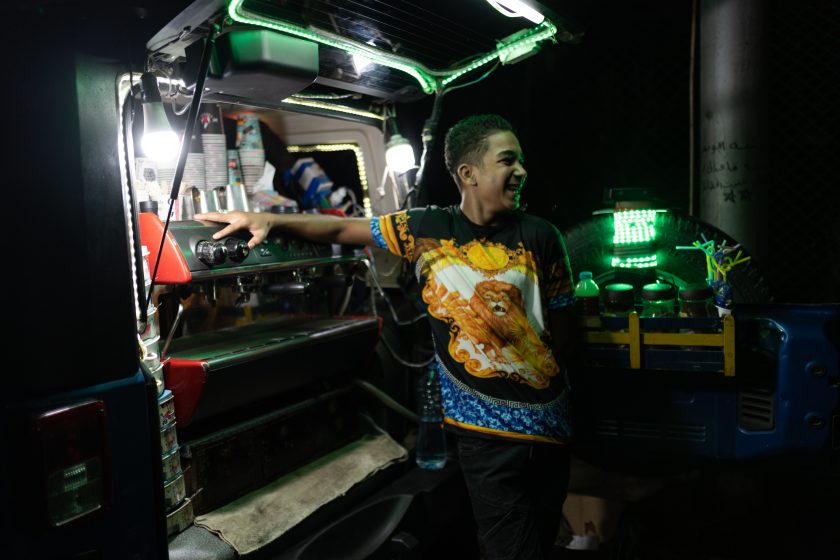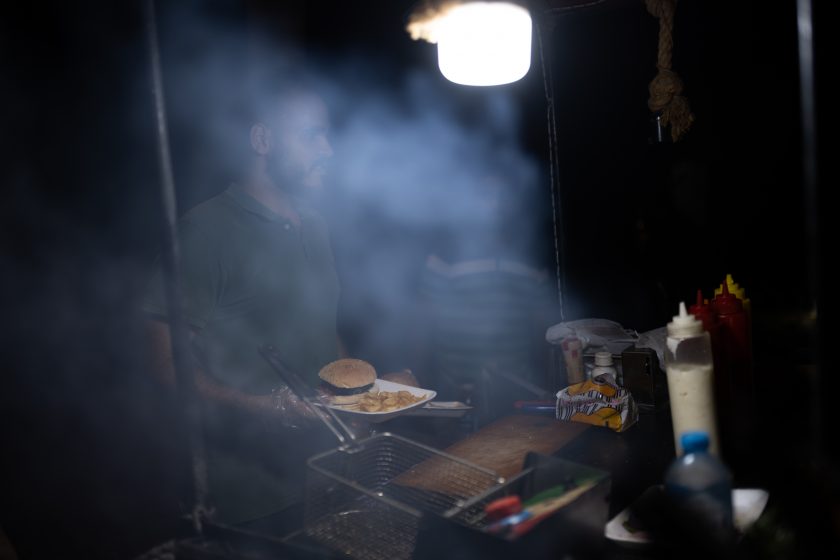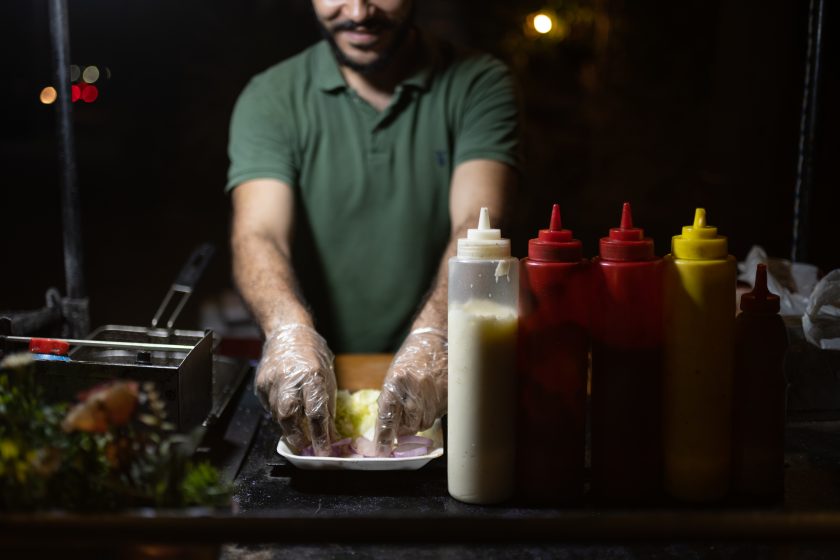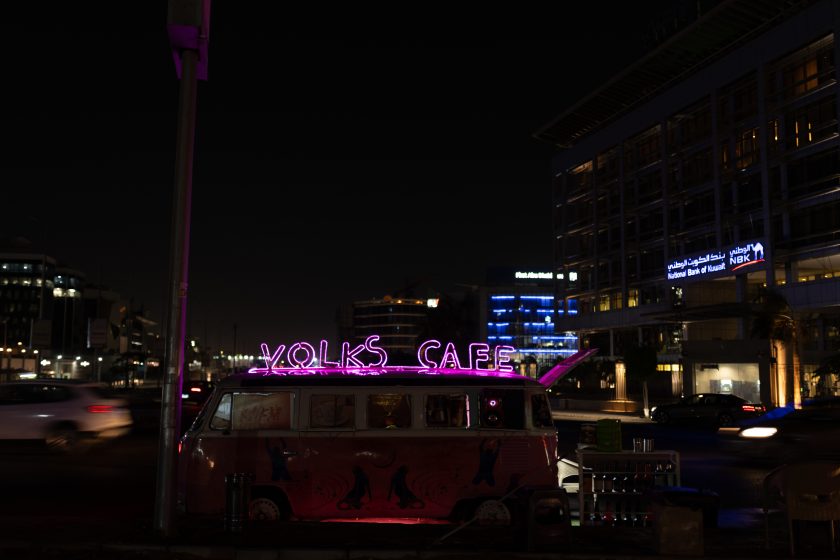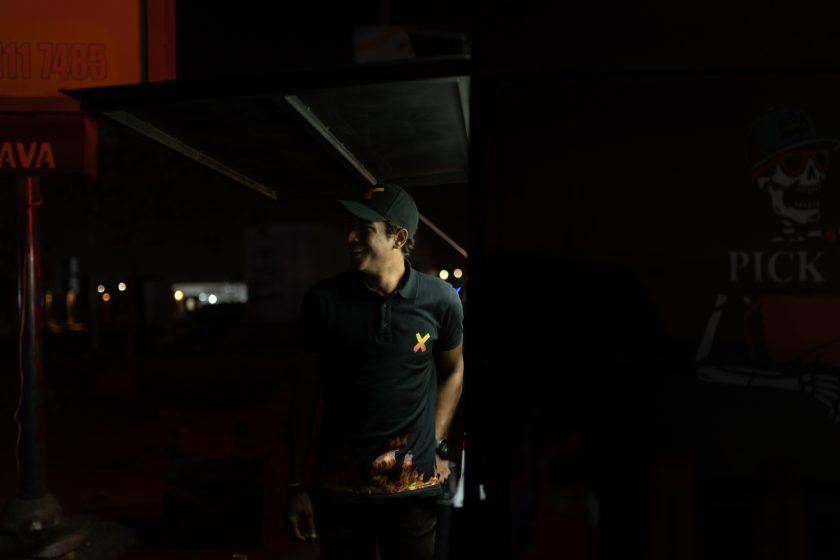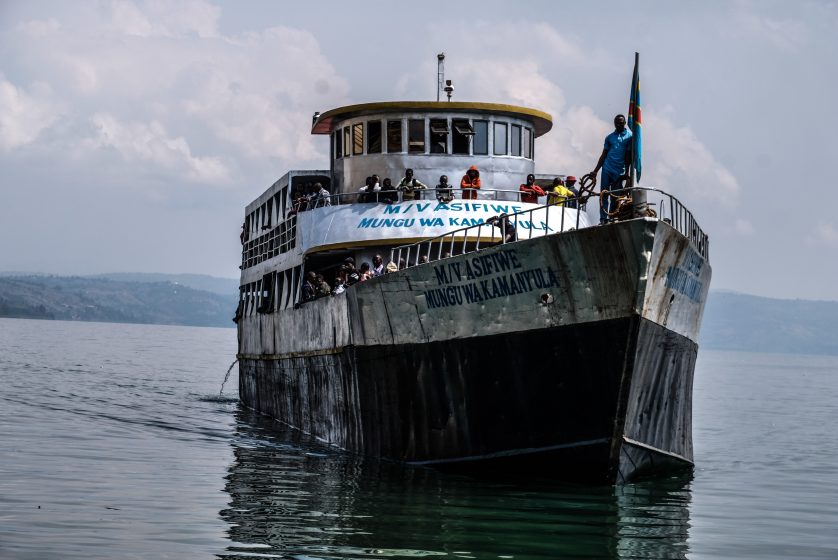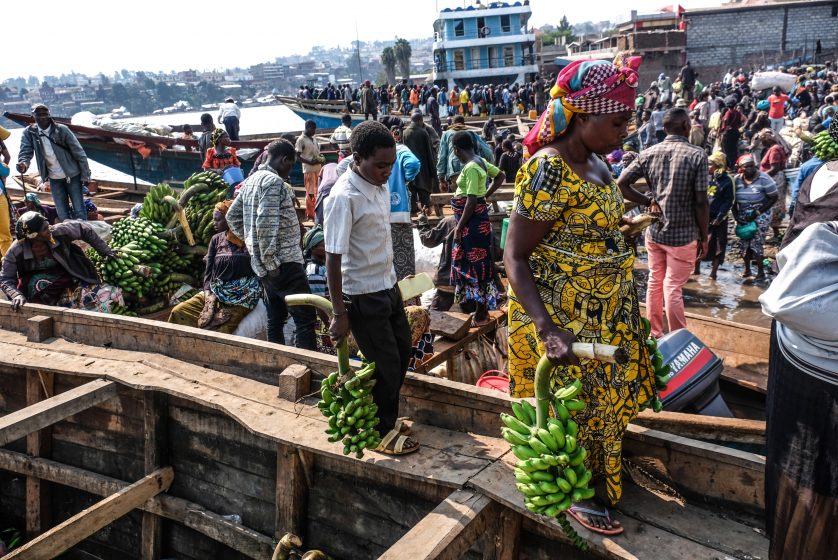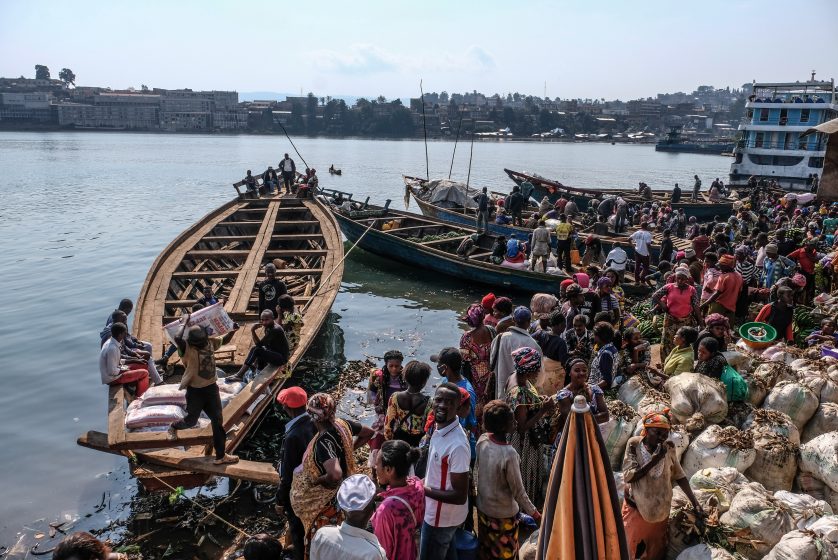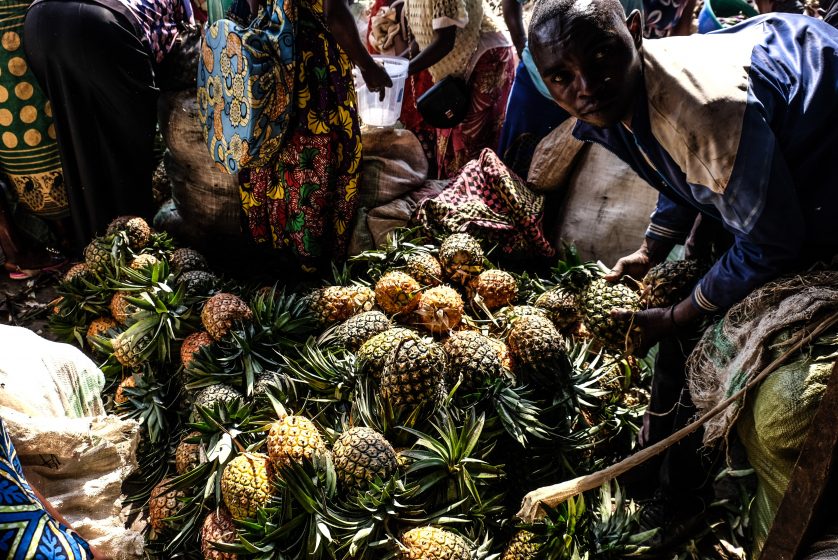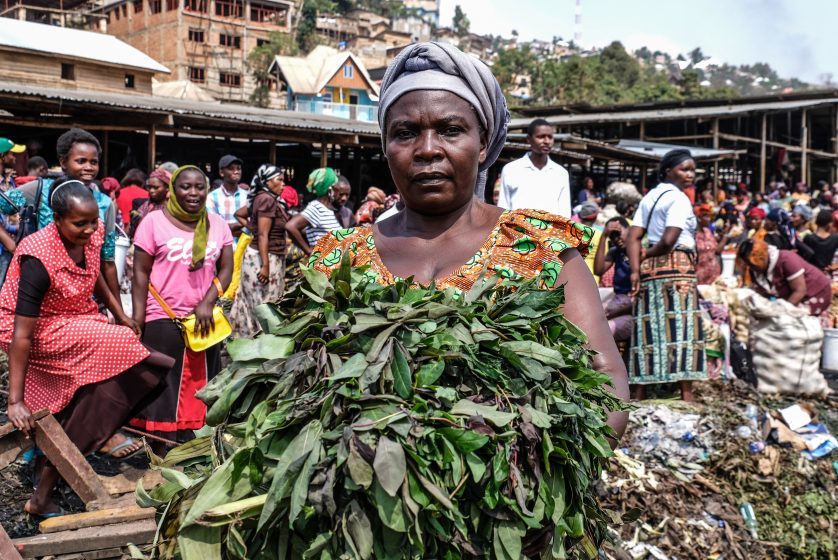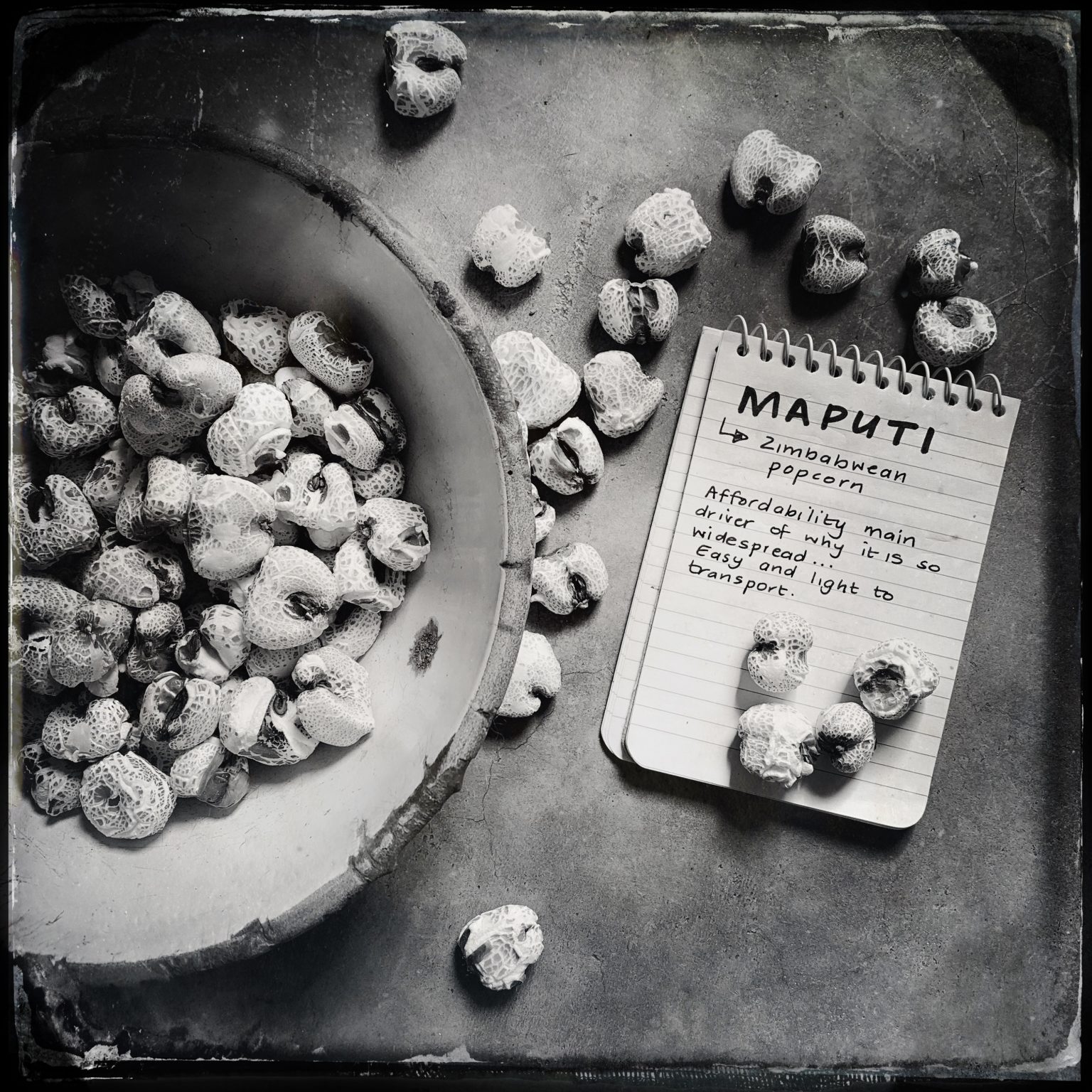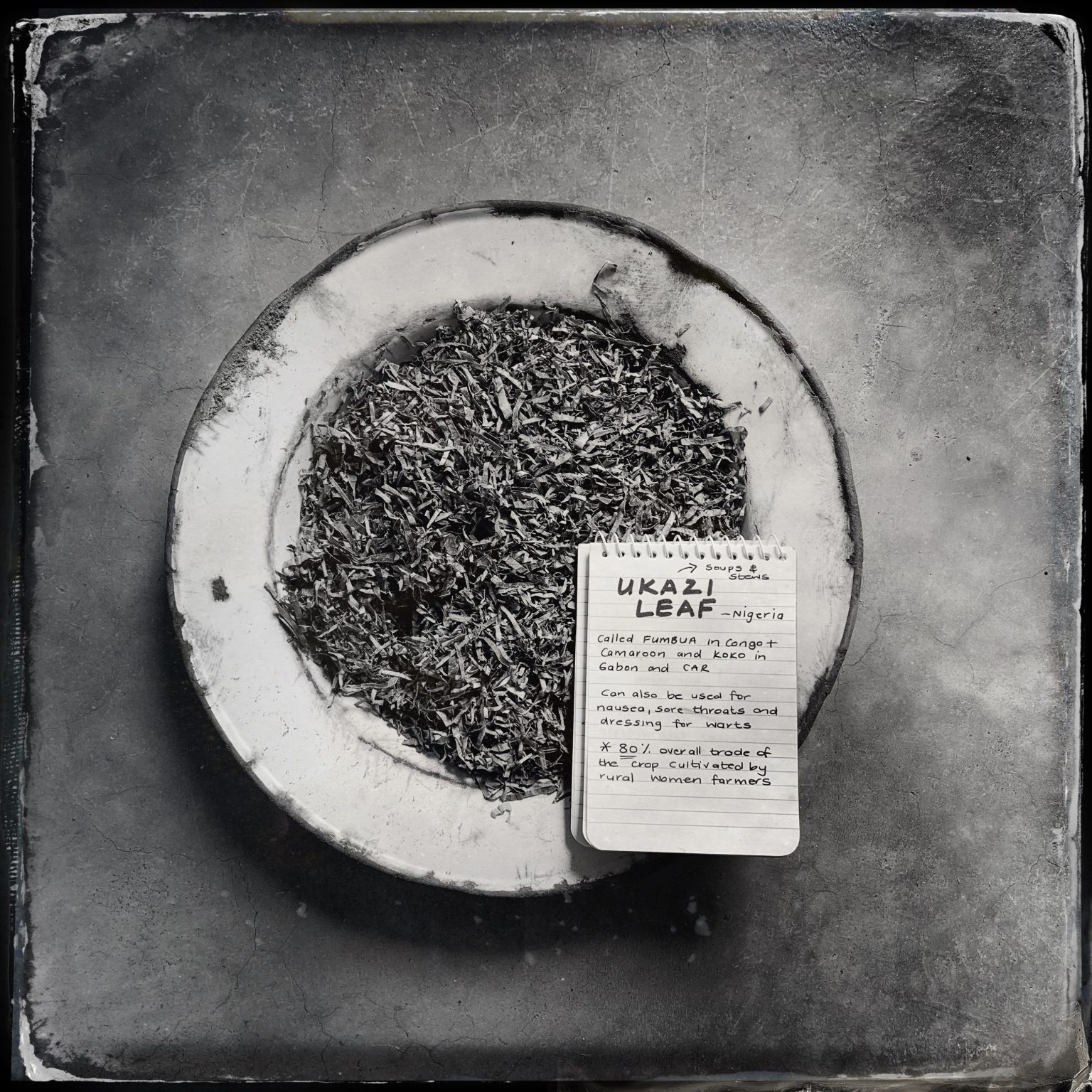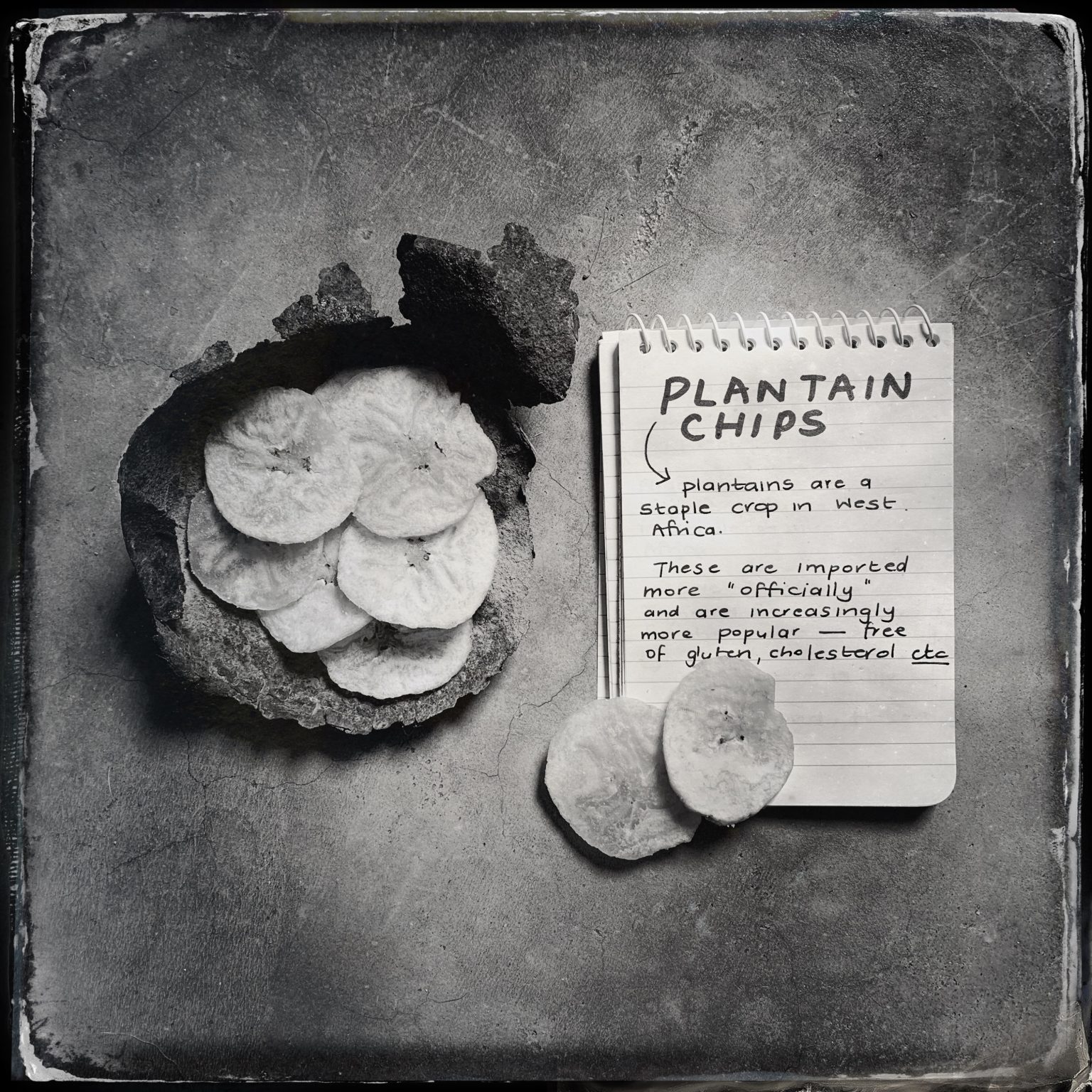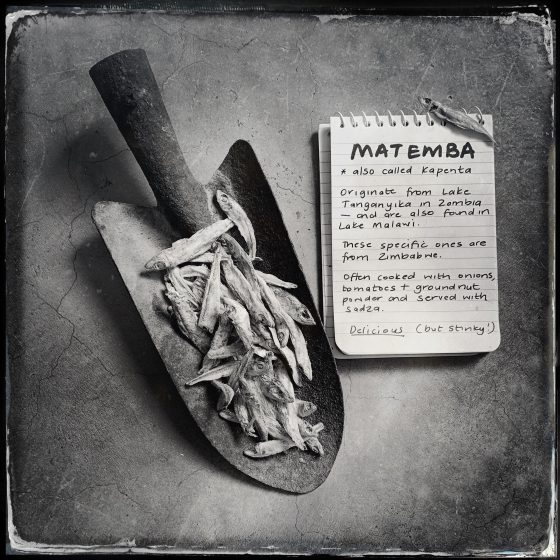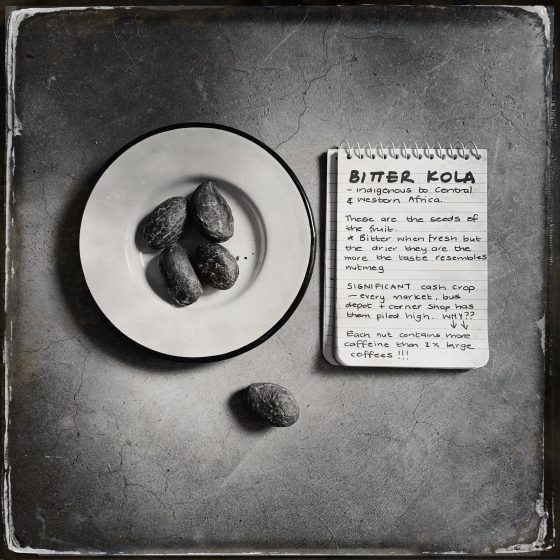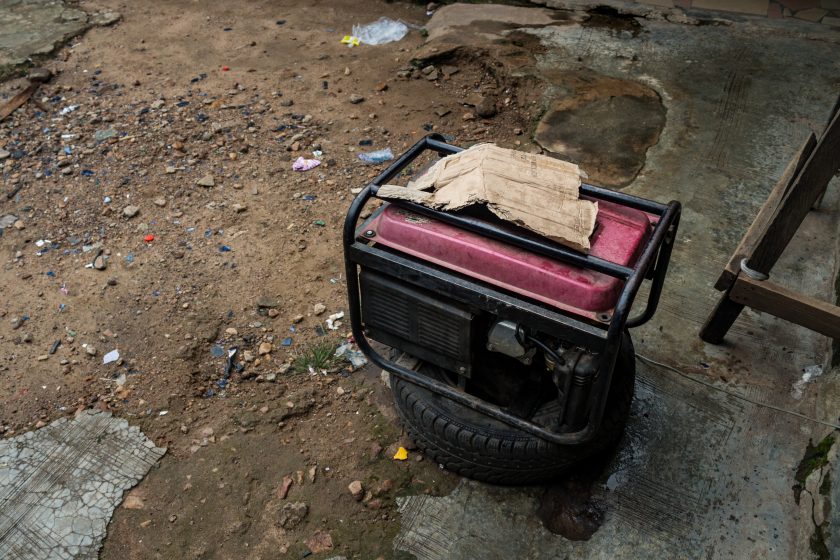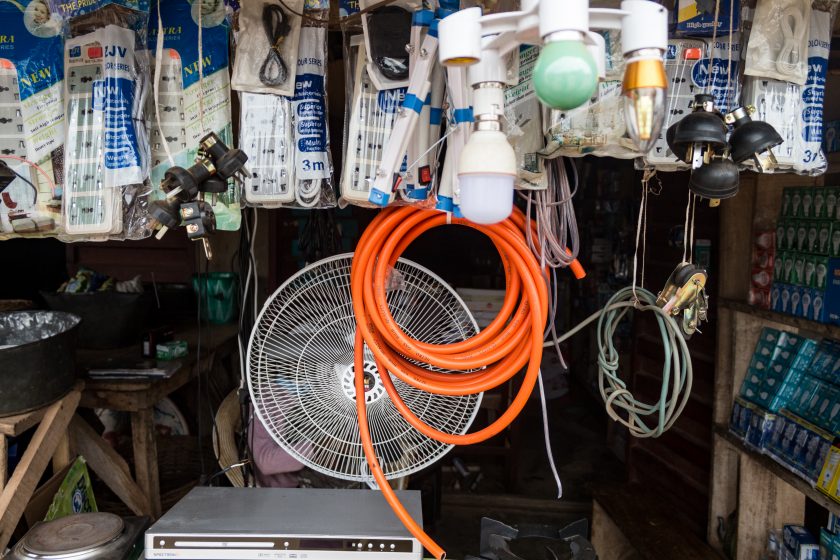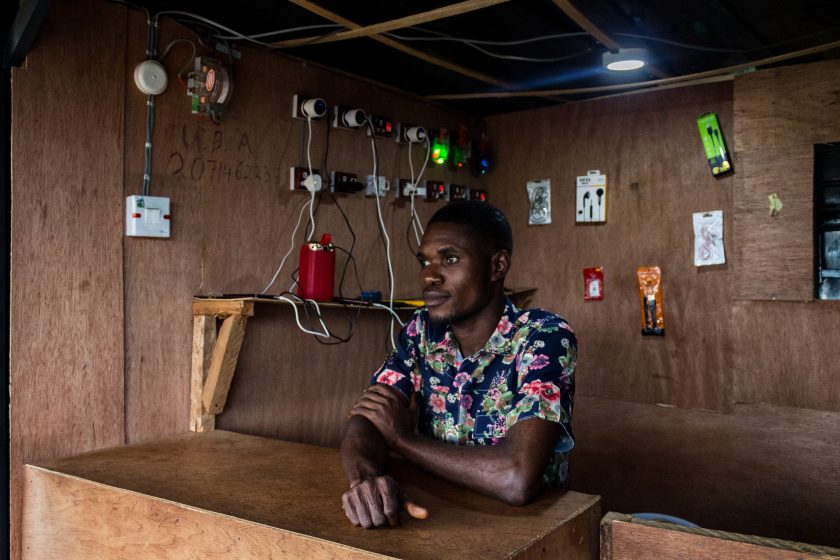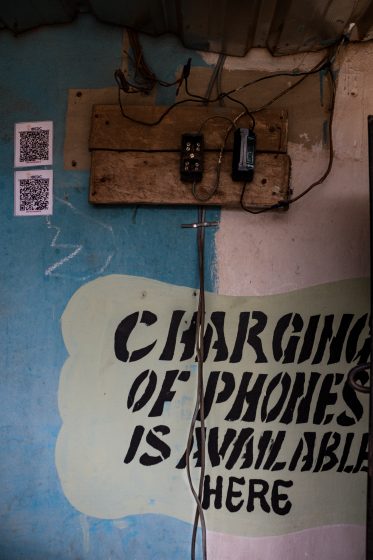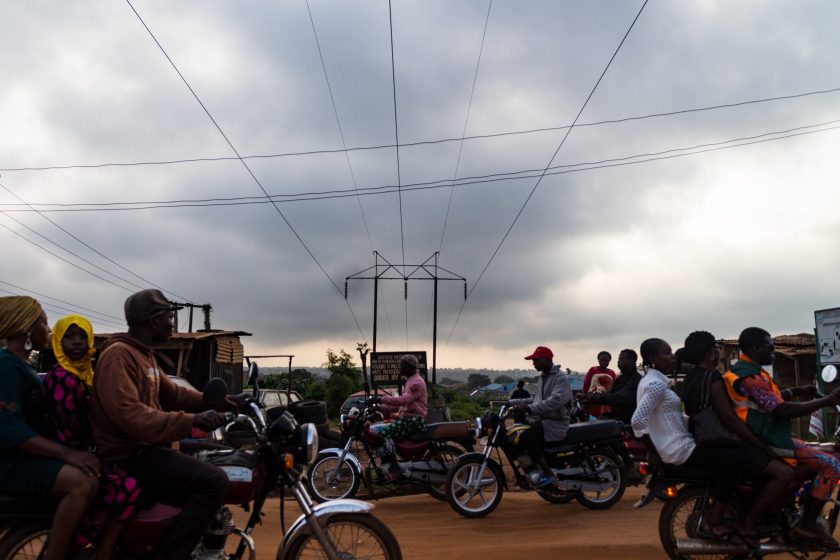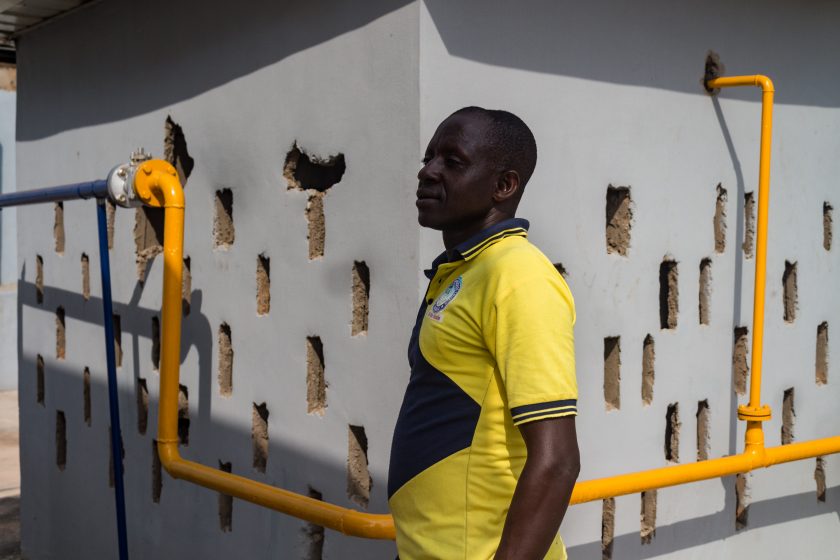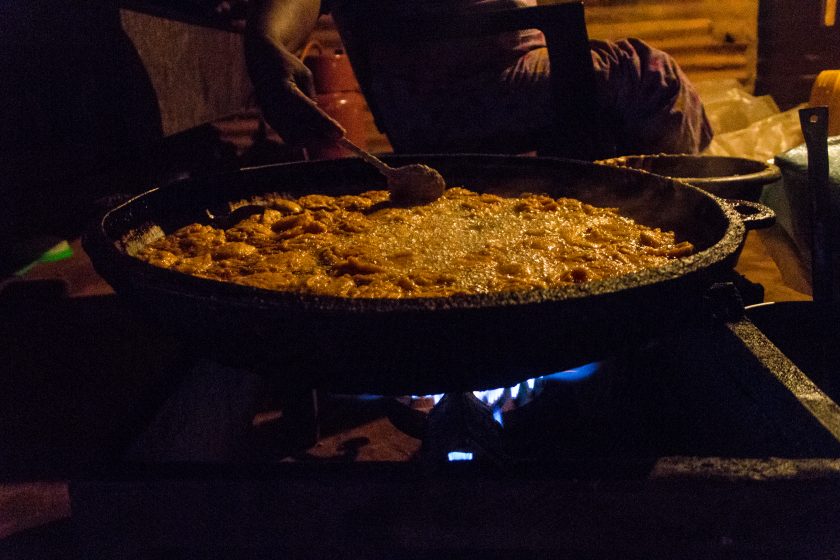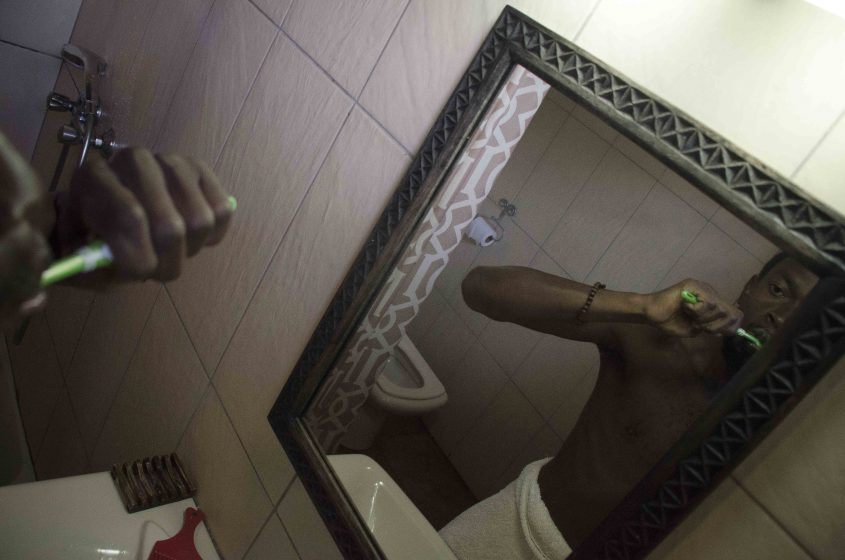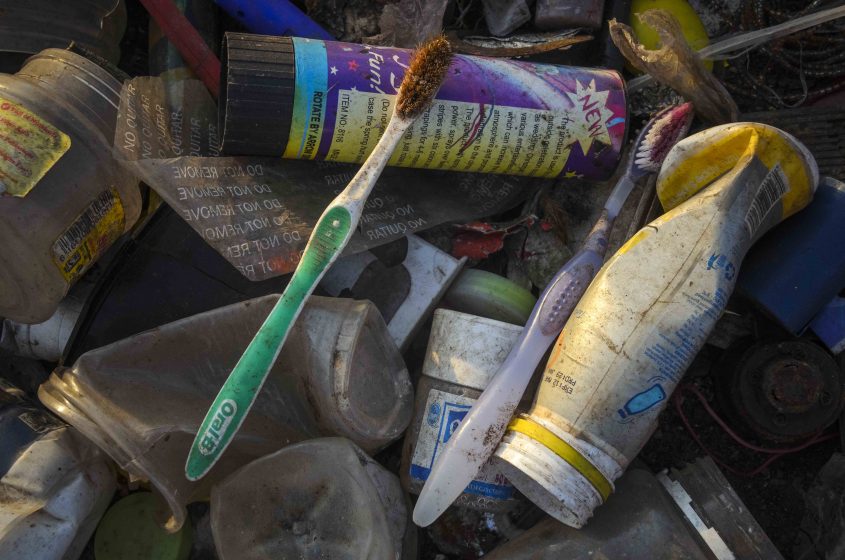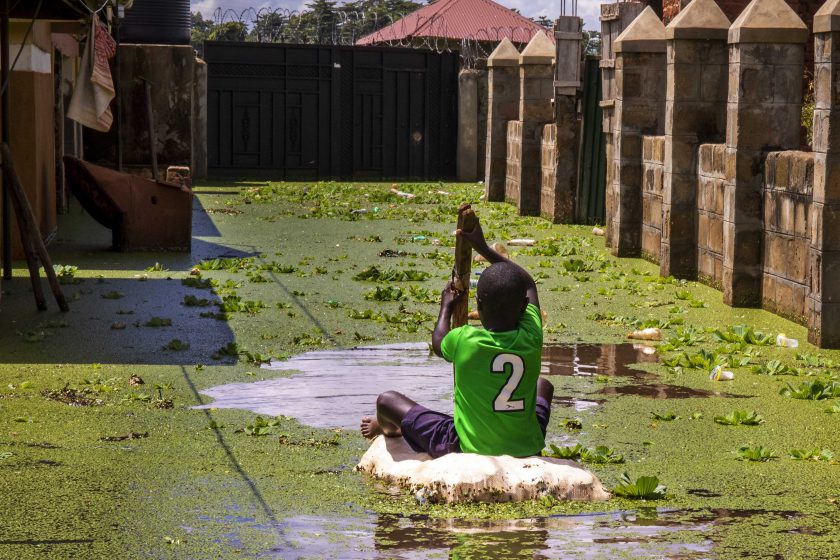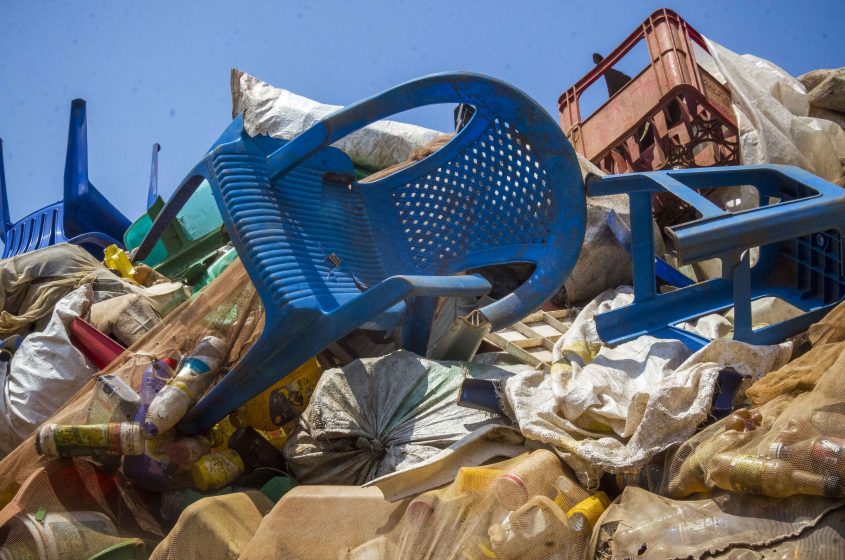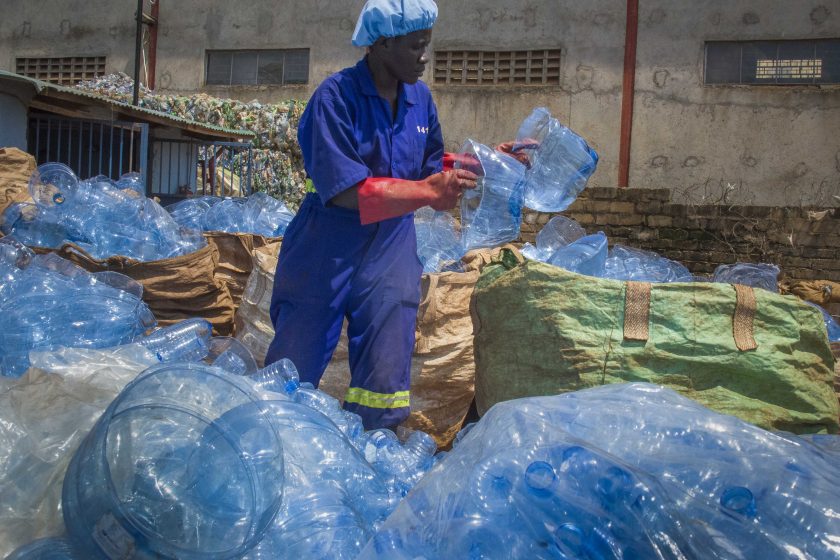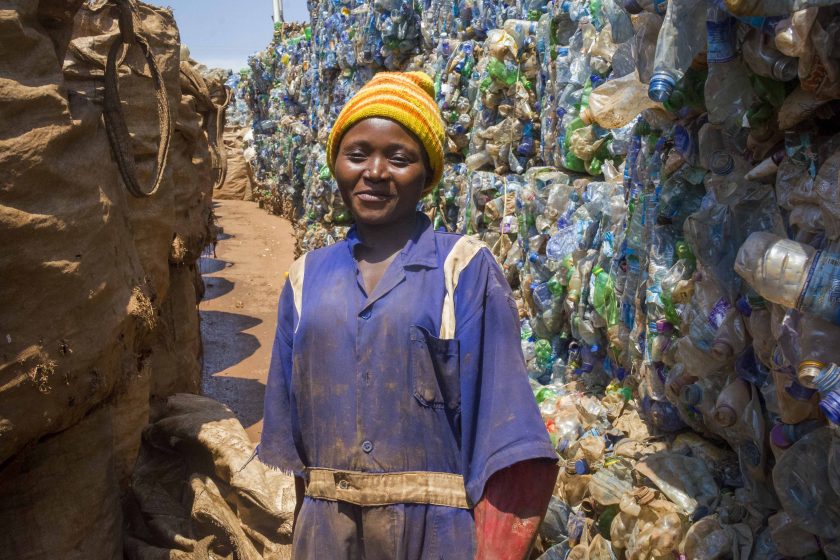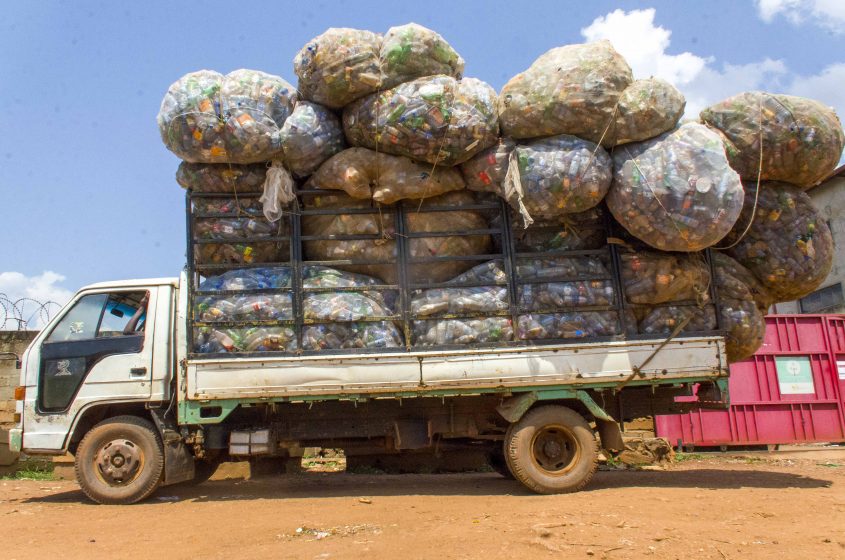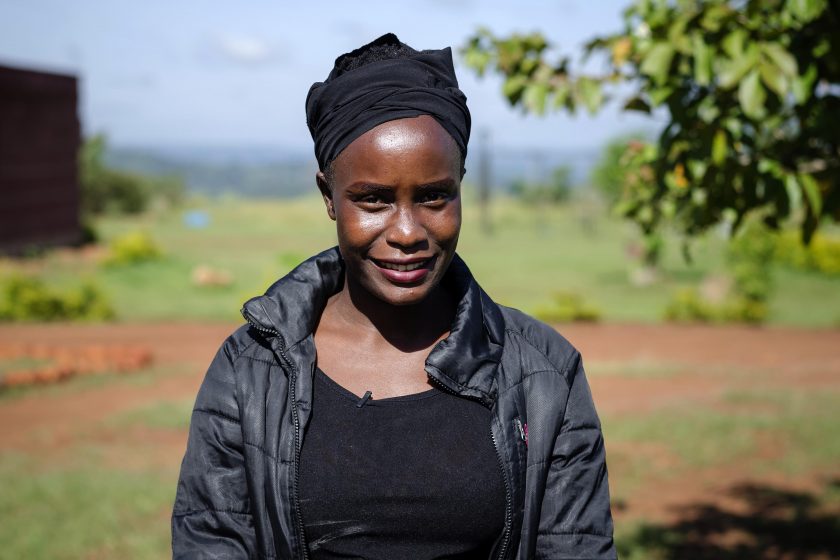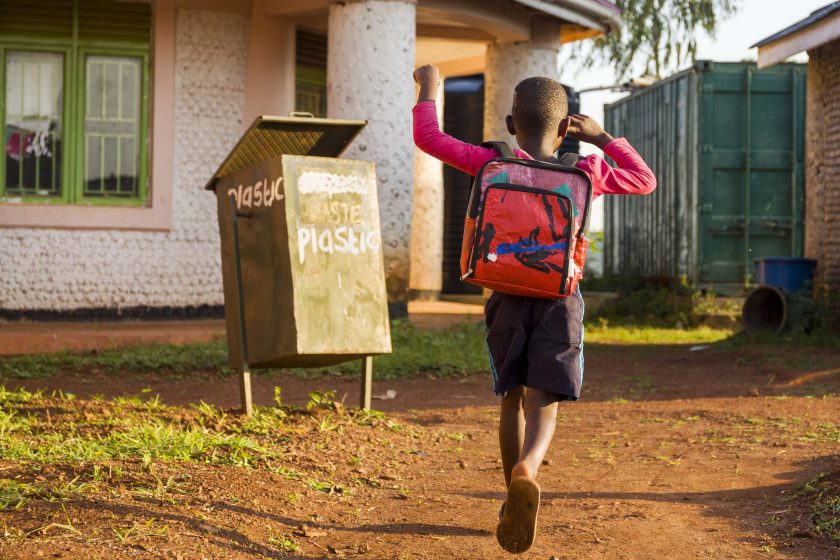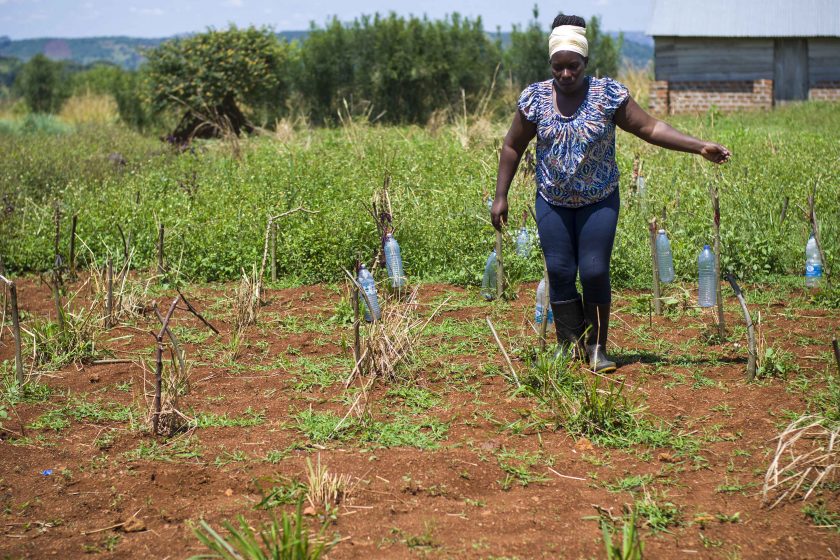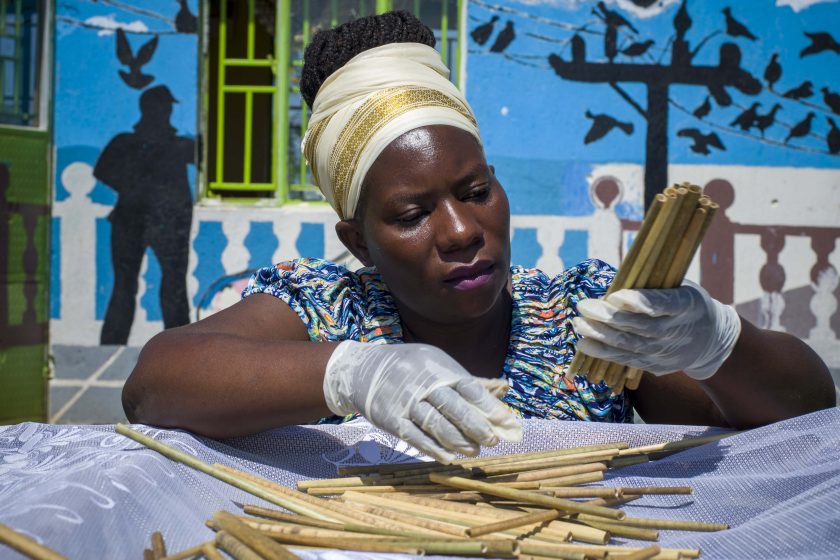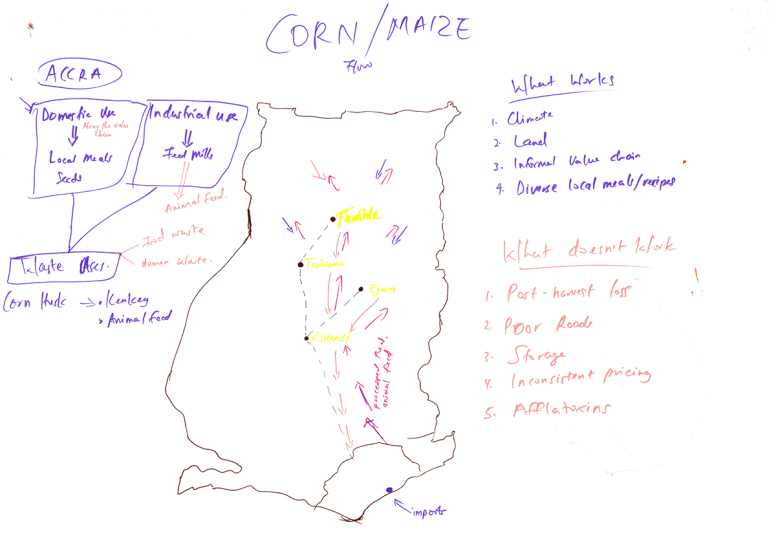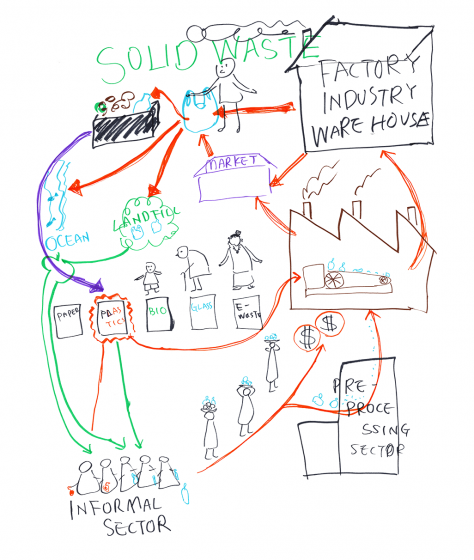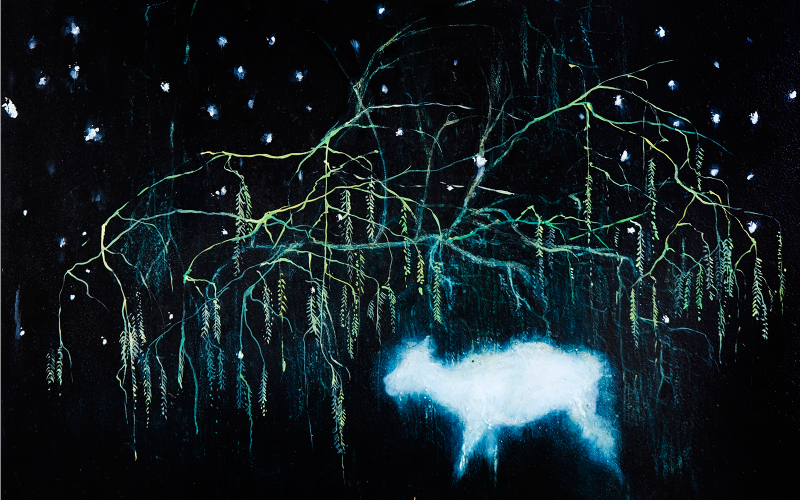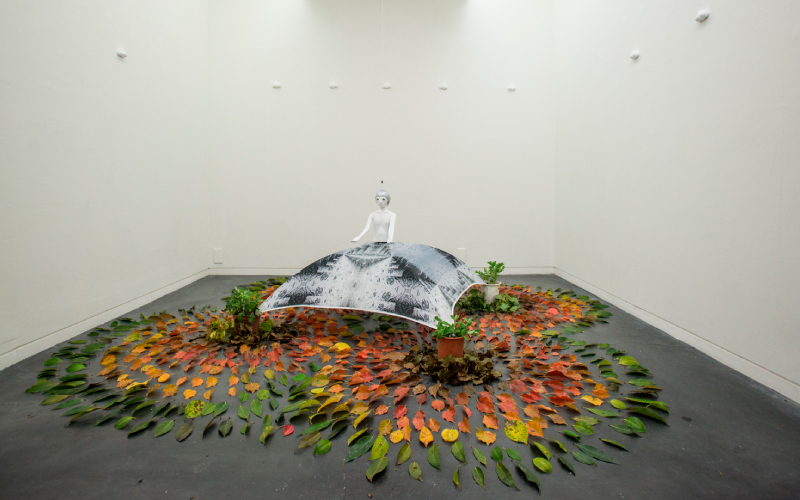Introduction
Welcome to our exhibition! It’s been a year in the making, and will keep evolving. We’d love to hear your thoughts: [email protected].
The hidden flows exhibition emerged out of a need to enrich current conversations about resources, infrastructure and services in African cities. There is ongoing research, through the lens of urban metabolism, to measure and track how resources flow through our cities, in order to support decision making and policy generation. Traditional urban metabolism research approaches rely on extensive quantitative data. Gathering these data accurately is difficult in most cities and even more so in African contexts because of the way resources move – not through typically piped and cabled network infrastructures – but in ways which are reliant on decentralized systems and on private [informal] individuals and organizations.
A central challenge exists: If data are required to make decisions, but no data are available to describe how private individuals enrich our urban economies, these people and these systems are effectively rendered invisible. The Hidden Flows photography exhibition seeks to bring to light the people, resources and infrastructures which support our lives, yet go unseen – either because they are literally buried, covered or hidden, or because we take them for granted despite them being right in front of us.
The images and stories shared here portray the diverse ways in which we resource our cities, the unique cultures that emerge because of this, and the value that private actors contribute to our societies. The dialogues which accompany this exhibition seek to invite more perspectives into the conversation on urban resources, to connect quantitative and qualitative understanding of our cities, champion the value of creative expression in meaning making, and reflect on internal and external portrayals of African cities. It is organized into three sections: Instagram voices shares crowd-sourced images from across cities in the continent; (in)visible stories offers a deep-dive stories of resource flows in five African cities and; what now shares next steps for the exhibition through policy dialogue.
Instagram Voices
Photographers and urban citizens from across the continent shared images to respond to themes of food, water, energy, waste and mobility, under the banner of #hiddenflows. We received 646 images from many African cities, sharing diverse and recurring themes including:
- Transport interchanges as sites of trade, both markets and on-foot
- Static and fluid gender roles in trade and business
- The daily toil and dependence on manual labour to move resources through our cities
- Food as cultural expression
- Energy as hidden in all our activities
- Water as disruption, recreation and livelihood
- The interdependence between transport and food
- The interrelation between urban flooding and waste
- An underpinning of creativity and ingenuity
(in)visible Stories
Five photographers explore the themes of hidden flows in a city in each region of the continent. Rehab Eldalil shares surreal nighttime visuals of food vendors in Cairo, Egypt, who attract their clients with bright neon lights, and have created a unique community response to meet the needs of nightlife and socially distanced connection in the time of Covid-19. Esther N’sapu explores the crucial role of the boats which transport diverse foods and products across Lake Kivu to Bukavu, Democratic Republic of the Congo. Sam Reinders reflects on intra-African mobility, belonging and the cultural value of food through carefully considered still lifes of food products from across the continent, all found in Cape Town, South Africa. Fawaz Oyedeji observes the diverse forms of energy that support living in Olodo, a township in Ibadan, Nigeria. Katumba Badru tells intertwined stories of plastics in Kampala, Uganda, from their role in flooding and environmental degradation, the people who collect and separate plastic streams, to the people who are building businesses out of sustainable alternatives.
Night Out
by Rehab Eldalil
Egyptians are well known for their need to connect and socialize. They’re known to be loud, jokers and always looking for a nice time out with friends or family. So when the pandemic struck Egypt in March 2020 and the government applied a lockdown on restaurants, cafes and most public places as well as a curfew, many Egyptians thought of solutions to stay connected to their loved ones nevertheless. In Cairo, the street became a popular hang out for children and adults. Children roam the streets with their bicycles and kites. Adults turn on their speakers and use the trunk of their cars as seats. Egyptians have reclaimed the streets of their city after years of negligence due to the rapid spread of malls, cafes and restaurants in Cairo.
“Where neon lights are spotted, food and drinks are found.”
As a result, a new phenomenon has emerged and remained after the lift of lockdown. Parked between neighborhoods, highways and in front of cafes that close early are vehicles that might at first glance seem as normal cars, until the neon lights are turned on. Innovative food and beverage cars attract Egyptians who are looking for a cheap and convenient source of drinks and snacks in the street as they gather during weekends to socialize. Affected economically by the Covid-19, many Egyptians now seek solutions to maintain their social life and well-being while reducing their daily expenditure.
“Where neon lights are spotted, food and drinks are found.” says Ahmad (31). An engineer who frequently gathers with his friends in the street after work.
Run mostly by college students and young men, their cars are transformed into a mobile cafe and a profitable business. Egyptians drive through neighborhoods looking to spot the neon lit cars, seeking good coffee and a nice time out with loved ones.
During the summer, Mohamed (19) works as a waiter on a beverage car in Sheraton to support his family. He walks towards the cars parked around his boss’s neon lit car to take orders from customers. His job mainly occurs between 7pm until 4am, where most customers seek to socialize with friends after work.
The Sobhy brothers started off with a burger cart in Masr Elgedida, serving freshly grilled burgers to parked cars in the street. Both brothers are college students in Ain Shams university, looking for income to support their family during the summer holiday.
“We’re also planning to open a pancakes cart across the street next month!” says Mohamed Sobhy.
In addition to neon lights, street lights also play a huge role in Egyptians’ social life. Karim (32) meets his friends under a street light in New Cairo every Friday evening. Well lit squares and parking lots around Cairo have become hubs for Egyptians to gather and meet up throughout the night during weekends and after work. After the lift of lockdown, all cafes and restaurants are forced to close by 11PM, relatively early for Egyptians who are fond of going out well into the night. But street lights have provided a convenient solution for those looking to remain connected to their loved ones while enjoying the evening’s fresh air in the streets of Cairo.
Innovation is ignited out of needs and necessities. We humans are social beings, we strive by remaining connected to family, friends and neighbours. For Egyptians in particular who depend on the company of loved ones, connection is key to maintaining one’s well-being especially during the pandemic and its economic impacts. Light, electricity and food provides this opportunity for Egyptians in Cairo.

Rehab Eldalil
Documentary Photographer & Visual Storyteller
lives in New Cairo, Egypt
Rehab is a documentary photographer and visual storyteller. Her work focuses on the broad theme of identity explored through collaborative approaches, transforming subjects into collaborators in the body of work. She is a member of Native Agency, Women Photograph, Diversify Photo, APJD and Ruwa.
Le lac-Kivu, trait d’union entre la campagne et la ville
by Esther N’sapu
Lake Kivu, a link between the countryside and the city
english translation
Les bateaux et boats à moteurs circulent sur le lac Kivu entre la ville de Bukavu (près d’un million d’habitants) dans l’Est de la République démocratique du Congo située au sud du lac et les villages de Kalehe, Idjwi et Minova situé à l’extrême sud du lac. En effet, plusieurs bateaux et boats à moteurs font le trafic entre Bukavu et ces villages pour le transport des personnes et des marchandises.
Boats and motorboats circulate on Lake Kivu between the city of Bukavu (with nearly one million inhabitants) in the east of the Democratic Republic of Congo located south of the lake and the villages of Kalehe, Idjwi and Minova located at the extreme south of the lake. Indeed, several boats and motorboats traffic between Bukavu and these villages for the transport of people and goods.
Ces villages sont parmi ceux qui ravitaillent la ville de Bukavu en vivre qui viennent fraîchement des champs. Comme par exemple les bananes, les ananas, le manioc, les feuilles du manioc, les haricots, la cannes à sucre, les pommes de terre, les patates douces mais également en bétails comme les chèvres, les poules et les dindons. En effet, seuls une soixantaine de kilomètres séparent Bukavu de ces villages et le transport lacustre est le moyen de transport le plus facile en raison du mauvais état des routes et le manque de sécurité. Par la route, en la saison sèche, il faut plusieurs heures pour se rendre dans ces villages, mais en traversant le lac, il n’y a que 2 heures et demie pour les gros bateaux et trois heures pour les boats à moteurs. Sans l’existence de ces bateaux, l’économie entre Bukavu et ces villages serait fortement ralentie et les habitants beaucoup plus isolés. En outre, grâce à ces trafics, les commerçants peuvent faire un aller-retour vers la ville le même jour.
These villages are among those that supply the city of Bukavu with food fresh from the fields such as bananas, pineapples, cassava, cassava leaves, beans, sugar cane, potatoes, sweet potatoes, but also livestock such as goats, chickens and turkeys. Indeed, only about sixty kilometers separate Bukavu from these villages and lake transportation is the easiest means of transport due to the poor state of the roads and their lack of security. By road, in the dry season, it takes several hours to get to these villages, but crossing the lake takes only 2.5 hours for large boats and three hours for motor boats. Without the existence of these boats, the economy between Bukavu and these villages would be greatly slowed and the inhabitants much more isolated. Moreover, thanks to this traffic, traders can make a round trip to the city during the same day.
“The city’s economy revolves around the boats and the people.”
Par ailleurs les commerçants qui font ce trafic entre Bukavu et les villages sont les seuls personnes qui ravitaillent leurs villages en aliments comme le sel, le riz, le savon, de l’huile d’arachide mais également de crédit de téléphone. Lorsqu’ils vont en ville pour vendre les vivres, à leur retour ils ramènent dans leurs villages respectifs le sel, le savon, de l’huile d’arachide car trop rare et trop chère. Ces genres de transaction font vivre plusieurs familles.
C’est le cas de Sifa Muliamungu 52 ans, elle est vendeuse de légume depuis plus de 10 ans. Elle habite Minova et fait Bukavu deux fois par semaine pour revendre les feuilles de manioc appelées dans la langue locale « sombe » dans le marché Beach Muhanzi. Dans son village elle revend sur le marché local le riz et le savon qu’elle ramène de Bukavu. Grace à son business elle scolarise ses 5 enfants.
In addition, the traders who make this journey between Bukavu and the villages are the only people who supply their villages with food such as salt, rice, soap, peanut oil and also telephone credit. When they go to town to sell food, they bring back salt, soap, peanut oil to their villages, resources usually that are too rare and too expensive. These types of transactions support several families.
This is the case of Sifa Muliamungu, 52 years old, she has been a vegetable seller for more than 10 years. She lives in Minova and goes to Bukavu twice a week to sell cassava leaves (called “sombe” in the local language) at the “Beach Muhanzi” market. In her village she sells the rice and soap she brings back from Bukavu at the local market. Thanks to her business she is able to send her five children to school.
« Je suis la seule qui s’occupe de ma famille car mon mari n’a pas de travail. C’est vrai c’est dure de faire ce trajet mais c’est ma seule source de revenu. Prendre le boat à moteur me coûte très moins cher mais c’est aussi dangereux car nous n’avons pas des gilets de sauvetage. Cela nous expose à plusieurs danger sur la lac ».
“I am the only one who takes care of my family because my husband doesn’t have a job. It’s true that it’s hard to make this journey but it’s my only source of income. Taking the motorboat is much cheaper but it is also dangerous because we don’t have life jackets. That exposes us to several dangers on the lake”.
Les commerçants qui emprunte ce moyen de transport sont confronté à plusieurs difficultés comme par exemple, des cas de noyades pour ceux qui voyage par les boats à moteurs car trop chargé. Et cela engendre souvent plusieurs morts et des pertes de marchandises. Ce moyen de transport est très important pour ces habitants de ces villages, car certains sont très enclavés et d’autres sont des ilots situés sur le lac Kivu. Ces boats sont leurs seuls moyens d’atteindre les villes.
Traders who use this means of transport are confronted with several dangers, such as drowning cases when the motorboat is too loaded. This often results in several deaths and loss of goods. This means of transport is very important for the inhabitants of these villages, some of them are very landlocked and others are living on islets located on Lake Kivu. These boats are their only way to reach the cities.
Par conséquent Prudent Pama, porte-parole des armateurs du Sud-Kivu, pense que les autorités de la ville de Bukavu devraient penser à mettre à la disposition des voyageurs des gilets de sauvetages pour prévenir de cas de noyades de boats. Mais également élargir le marché « Beach Muhanzi » qui accueille les vivres d’au moins une cinquantaine de boats qui viennent des villages environnants car les commerçants paient la taxe tous les jours.
Par contre Prudent Pama fustige les tracasseries liées à la présence de plusieurs services illégaux sur différents ports de la province du Sud-Kivu entre autre au « Beach Muhanzi » .
« Au port de Goma, on compte 23 services, à Bukavu 25, et au port de Kalundu, à Uvira jusqu’à 30 services alors que seuls 4 services sont reconnus par le décret présidentiel. Cela pénalise les petits commerçants qui vivent de ce trafic. toutes ces tracasseries rendent la navigation invivable ».
Therefore, Prudent Pama, spokesperson for the South Kivu ship owners, believes that Bukavu city authorities should think about making life jackets available to travelers in order to prevent drowning cases. But also expand the “Beach Muhanzi” market which welcomes the food delivered by at least fifty boats coming from the nearing villages, because traders pay the tax every day.
On the other hand, Prudent Pama criticizes the hassles related to the presence of several illegal services in various ports in the province of South Kivu, including “Beach Muhanzi”.
“In the port of Goma, there are 23 services, in Bukavu 25, and in the port of Kalundu, in Uvira, up to 30 services while only 4 services are recognized by the presidential decree. This penalizes the small merchants who live from this traffic. All these hassles make navigation unbearable”.

Esther N’sapu
Journalist and Photographer
lives Goma/Bukavu, Democratic Republic of Congo
Esther N’sapu is a journalist and photographer based in the Democratic Republic of Congo and a member of the African Photojournalism Database (#APJD). She is interested in documenting her region in a different way, “not as a land of conflict but rather a land where there is love and hope.”
Instagram: @esther_nsapu
Twitter: @Ensapu1
Notes from Tanganyika
by Sam Reinders
There is a Maasai Proverb that states: “Happiness is as good as food.” If you happen to live in Cape Town, but happen to be from pretty much anywhere else on the African continent, the chances are good you are able to satiate your happiness with food from your own country – even if it is 4000 kilometers away. That is the way Africa flows, often behind the scenes.
I met Tanganyika on a Tuesday afternoon. He owns a small store near Wynberg station in Cape Town. Tanganyika is his nickname. “Everyone just calls me that. I’m known around here. I’m the guy that can get you just about whatever you want to eat from home.” And so he can. You might not guess it by looking at his store, though. It’s no glamorous emporium. And you deal with him through metal bars in the door. He alone can fit inside. The walls are shelved, from floor to ceiling with foodstuffs from African countries from Mozambique to Mali.
Tanganyika himself is from Burundi. After his father was killed in the early 1990s, the family moved to South Africa. Although he’s tried for years, he still hasn’t managed to get South African residency. His four children were born here.
“Food is a piece of home.”
Tanganika gets his shop’s stock – cassava, uziza leaves, beans of a startling variety, nuts, roots, palm oil and rices from people who, over the years, have come to know he’s the guy. It’s the kind of informal trade that is at the pulse of Africa’s economy. Supply, demand, need. Someone packs him a little bag of something when they know they’re coming this way. Or to a friend in Johannesburg who then sends it south to him.
Why do his customers return I ask? Comfort, nostalgia, all of those things he tells me. “It’s difficult being away from home and it’s not something that improves the longer you’re away.” Food is a piece of home. A piece of happiness.

Sam Reinders
Photojournalist
lives in Cape Town, South Africa
Samantha Reinders is a photojournalist based between South Africa and Nepal. She is inspired by and pursuing stories about our relation to and impact on the landscape we inhabit. She is motivated by the African continent and its crazy complexities and is currently working on personal projects that tell a small slither of its story.
Light is good
by Fawaz Oyedeji
Adequate flow of resources like food, water, energy, waste and people are essential for growth and sustenance of any country. In order to successfully enhance meaningful development, effective strategies must be evolved at grass root levels too.
Here, we examine prevalent energy systems and the livelihood it supports within a rural- urban community in the south of Ibadan, Oyo.
Over 60% of the Nigerian population still resides within rural spaces. To thousands of residents of the (Olodo) community, the necessity for access to electrification cannot be denied as households have diverted to other means such as generators and firewood to get things done daily; all of which have implications for the environment.
My purpose with this study is to bring to light and provide a narrative around rural energy experiences in Nigeria.
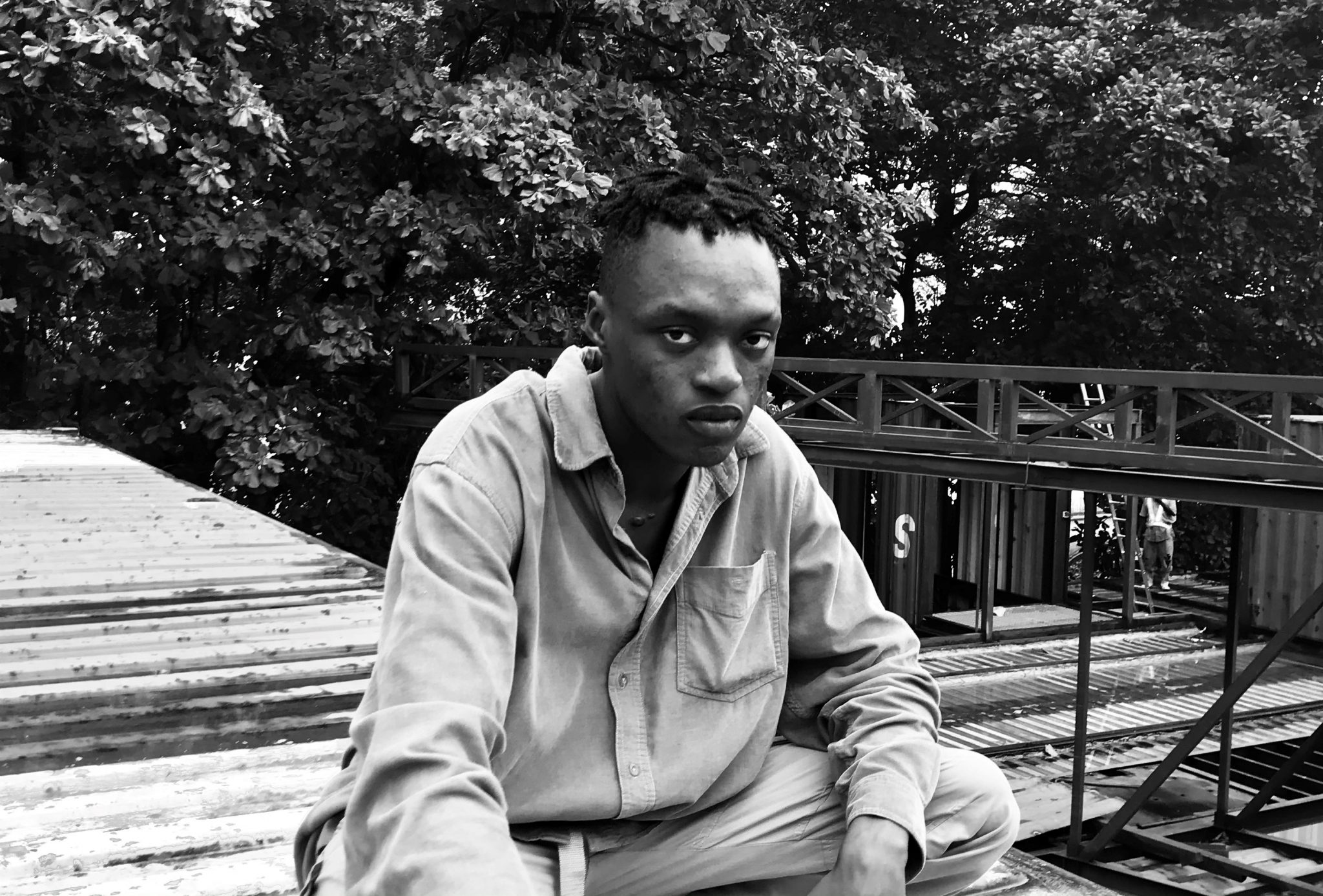
Fawaz Oyedeji
Documentary Photographer and Historian
lives in Lagos, Nigeria
Fawaz Oyedeji is a documentary photographer and historian from Oyo, Nigeria. His works are focused on socio-cultural and environmental practices related to local communities in Africa.
My trash your trash
by Katumba Badru
Plastic littering is a common practice across Uganda, a country famously referred to as the Pearl of Africa by the late great British statesman, Winston Churchill. Most of the time, what people in Uganda do not need, such as single-use soft beverage, mineral water bottles or polythene bags end up tossed on the road or in drainage systems. Plastics are hazardous to the environment, animal, human and aquatic life. However, not many people in Uganda are cognizant of the potentially dangerous pollution they create and how it impacts human life and health.
“Kampala, the country’s capital city accounts for around 1,300 tonnes of solid waste on a daily basis.”
Ostensibly dioxins released during the burning of plastics can cause cancer. When fish, seabirds, and mammals ingest plastic debris, they reportedly suffer impaired movement and feeding, reduced reproductive output, lacerations and death. Uganda National Environment Management Authority (NEMA) estimates that close to 600 tonnes of plastic wastes are disposed of daily in the country, with 50% of trash left uncollected. Kampala, the country’s capital city accounts for around 1,300 tonnes of solid waste on a daily basis according to Kampala Capital City Authority (KCCA), the City’s governing authority.
Uganda’s fight against plastic bags
Through the years, Uganda has had a checkered history in implementing laws proscribing the production and usage of polythene bags. In 2002, the High Court after several litigations by several Ugandan Civil Society Organizations ruled that rampant and uncontrolled use of polythene bags posed a danger to the environment and violated the rights of Uganda to a clean and healthy environment.
The government went on to impose an excise duty of 50% on the local production of polythene and plastic containers as an action to encourage producers to develop more environmentally friendly alternatives and for consumers to cut down on the usage of plastic materials. Needless to say, the excise duty imposition did not stop the problem as had been earlier envisaged.
In 2007, Ezra Suruma, the then Finance Minister proclaimed during the national budget reading that the government had banned the trade, production, importation, and use of plastic materials. However, not much leeway was made in enforcing and implementing the ban.
The government ban followed similar proscriptions in Zanzibar, Kenya, and Tanzania and came against a backdrop of increased smuggling of polythene bags into the country. To boot, it also imposed punitive excise duty of 120% on polythene bags and other plastic materials above 30 microns.
In 2015, the National Environment Management Authority (NEMA) declared a ban on polythene bags of less than 30 microns. The ban, which was to be implemented in coordination with the Kampala Capital City Authority was in line with the Finance Act 2009. To ensure the effectiveness of the ban, a stepwise approach that involved a ban on the issuance and distribution of polythene plastic carrier bags by supermarkets was instituted. Although the supermarkets obliged, many retail shops and roadside vendors still largely pack goods in polythene bags.
People making a difference
As a means of reducing plastic pollution in recent years, individuals and institutions have increasingly taken to recycling. In Mpigi, which is to the west of Kampala, plastic recycling is all the rage. 22 year-old Rachel Meema and her companions, Shamim Lukwago 24, and Faith Awako 26 are some of the town plastic recyclers. They refer to themselves as “wasteprenuers”.
Aweko, who is the founder of Reform Africa, a company whose niche is plastic recycling, says they recycle plastics into durable, sustainable waterproof bags, backpacks, and accessories, on a daily basis. Aweko is quite familiar with plastic littering, having grown up in the boisterous Kampala suburb of Naguru.
Her home was near a gutter and whenever it rained, the drainage channel would fill up with waste plastics and polythene bags. On many occasions, the plastics would block the drainage and whenever a pathway was not created for the water by the area’s residents, it would flood many homes, including Aweko’s. At length, many people in the suburb contracted Cholera.
“That for me was the last straw. It hurt that people in the neighborhood had started contracting water-borne diseases. I felt that something had to be done,” Aweko says. “I started removing the plastic bottles from the drainage channels as a means of creating a pathway for the water to flow. It later occurred to me that collecting the bottles, instead of burning them would earn me a small buck.”
Aweko did not only earn some money for herself but also reduced the size of flooding from the channel into her home. With time, it dawned on her that only plastic water bottles were being taken for recycling and not polythene bags.
In 2016, after dropping out of the university in her third year, Aweko needed to find a way to support herself. People under the age of 30 makeup about 75 percent of Uganda’s population and many of them are jobless. The situation in this patriarchal society is direr for women, who are three times as likely as men to have difficulty finding sustainable employment.
Refusing to become statistic, Aweko decided to join an innovation Academy, an organization that works with orphans, refugees and other disadvantaged youths to create social enterprises.
There she crossed paths with Rachel Meema, a refugee from the Democratic Republic of Congo, and Naluyima Shamim with whom she formed Reform Africa. They source the plastic waste directly from landfills and collection points around Kampala, Mpigi and Mbarara.
As we speak today, she collects over 200kgs of polythene bags every week from which she makes bags, wallets, earrings, and book covers under their company Reform Africa.
Aweko employs five single mothers and five youths at her recycling facility each earning UGX15,000 (an equivalent of 3 dollars daily), which they use to better their lives and families.
Recycling in Kenya
Recycling plastics is also big business in Kenya given the country’s plastic waste crisis. As a means of dealing with plastic pollution, Kenya introduced a ban on plastic carrier bags three years ago. Since the ban was imposed, the government says 80% of the population has stopped using plastic carriers. In June this year, the government announced that it was banning single-use plastics. It remains to be seen if the ban will have any impact.
“As Africans, we owe it to ourselves to practice responsible disposal of plastic waste, cognizant of its adverse effects.”
In Rwanda, plastic recycling as a means of dispensing with plastic pollution has grown. Rwanda unlike Uganda is known for the tough enforcement of laws. The country enacted a law in 2019 prohibiting the manufacturing, importation, use and sale of single-use plastic items, tightening a 2008 ban that prohibits the importation and use of polythene bags. Two years ago, the country launched a nationwide awareness campaign on the dangers of plastic pollution.
Way forward
While recycling plastics is looked at as one of the magic bullets to plastic pollution in the East African region, it has its critics. Their way of thinking is that the problem of plastics will not be overcome unless there is a shift in people’s lines of conduct, basing on how ancient Africans used to live. Essentially, they advocate that Africans should revert to their roots. The African ancients used natural solutions before plastics and the critics add that just like we grow food, we can naturally grow our products.
The ancients, they say grew biodegradable and compostable plant-based drinking straws, like the bamboo malwa [local brew] drinking straws used in the East of Uganda and West of Kenya. The ancients in the Buganda region turned Luseke grass [wild grass found in most parts of Africa] into drinking straws. As Africans, we owe it to ourselves to practice responsible disposal of plastic waste, cognizant of its adverse effects.
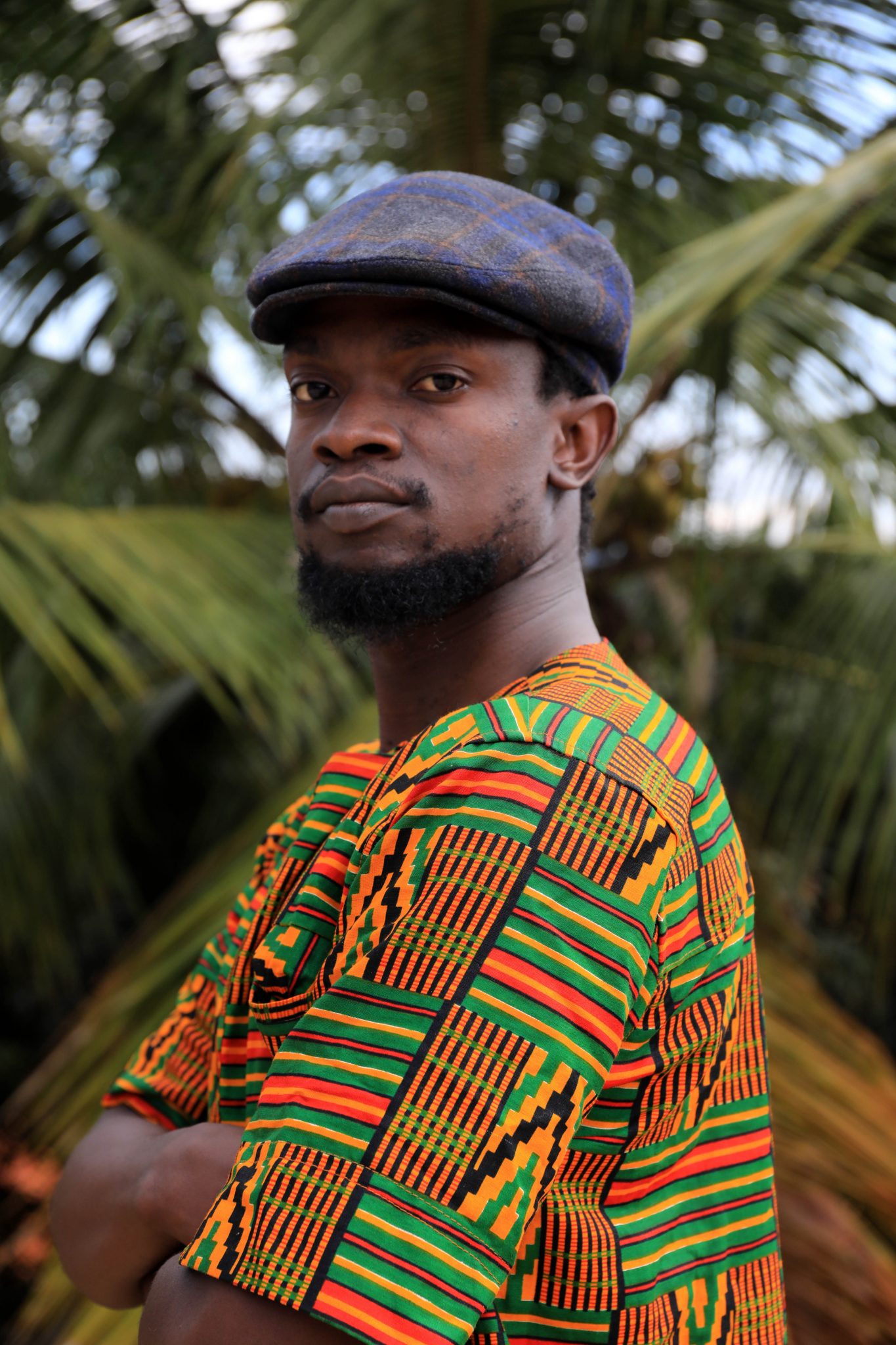
Katumba Badru
Photojournalist
lives in Kampala, Uganda
Katumba is multi-award winning freelance photojournalist based in Uganda. His pleasure is in capturing telling images about everyday life. His work has been published widely in the Wall Street Journal, Vogue, New York Times, Lemonde, The Guardian, the Star, London standards, etc. He is currently freelancing at New Vision one of Uganda’s leading daily Agency France Presse (AFP).
Towards photographic dialogues
Creativity is one of the sure ways to build shared understanding and trust across language, occupation, position and lived experience. We attach ourselves to stories that place us in certain moments. We look closer at paintings to uncover deeper meaning. We are drawn into maps to find the familiar and understand things in relation to ourselves. And we can begin to find collective meaning if we are creative together, reinterpreting, or challenging each other’s assumptions in generative ways. This exhibition and its emerging themes will support further dialogue and discussion.
Informal sector enhancing resource flows
by Esethu Mngxunyeni, Intern, ICLEI Africa
I have found it very interesting how all the five resources move in African cities almost exactly the same way. From Southern Africa through to the North of Africa, people access resources the same way. It is also quite interesting how the informal sector is contributing to people’s livelihoods more than the formal sector does. From transportation through to food, according to the hidden flows photo exhibition people benefit more from the informal sector as there are no red tapes. The informal economy has proved to be more inclusive and accessible. Which is something that governments need to take note of. The photo competition has also revealed that people are very capable of being independent and improving their socioeconomic status. From waste collectors to street vendors and rickshaws, citizens contribute to moving resources in their cities and are doing it very well.
On the importance of storytelling for our time.
by Carmen Bouyer, Arts Editor at The Nature of Cities
At the present moment it seems that we need to collectively create global cultures that can support adaptation and solidarity in a rapidly changing world, while also encouraging local cultural diversity. We need myriads of relationships between cultures as diverse as possible and yet highly interconnected in non-hierarchical ways. I am hopeful that storytelling, as an explosion of individual and collective creativity, is an art form that each of us can reclaim to create those conditions. Not only to support forms of collective organising taking into account complexity when facing local and global challenges, but also as a celebration of the billion ways of experiencing life on this planet.
The online show “Hidden Flows” is for me a strong expression of what a collection of highly creative individual viewpoints can tell when but together. I suddenly feel a sense of belonging to places I have never visited before, and feel immersed in both tangible realities as well as forms of sensibility to the world/ ways of looking at it, of sensing it, that I didn’t know before. It opens new gateways of understanding and of perception. It moves me beyond the dualistic vision of rational vs emotional, data vs storytelling. It is not either/or, but with both taken into account that we can attempt to grasp what is reality and act upon it. It also invites me to look at the structural realities of my own city that are not easily seen, and at own my individual ways of perceiving, acknowledging them as potent and valuable in their subjectivity. For many individual stories, when put together as a vast patchwork, reveal truth about reality that couldn’t have been accessed otherwise. This show is an invitation to welcome storytelling and individual ways of “narrating” the world (may it be through texts, photos, videos, sounds and more) as valued expressions of the city looking at itself and imagining its future. A form of democratic activism, that acknowledges the rich complexity and “pluri-layeredness” of our daily experience of the world.
Finding meaning in the hyper-local: a visual exploration of resources, people and place
by Jehan Bhikoo, Professional Officer: Urban Systems, ICLEI
It has been a fascinating journey co-creating the Instagram Voices and seeing the diversity in our cities as captured by people who experience these everyday. Although every city has a uniqueness to it, many challenges faced, and how individuals and communities respond to these, are similar. It was a great reminder that city responses grounded in everyday practices should not be taken for granted. External solutions (as often driven by decision-makers and funders) may not be the right solutions for the local and hyper-local context. This is the strength of photography and visual storytelling in that it captures these often missed everyday practices and solutions. In knowing these, we’re able to support what already exists.
An important aspect experienced during the photography process and crowdsourcing was in the language we use for resources, movement and sustainability as practitioners. Grounding sustainability in everyday language and making it accessible results in better engagement and inclusion. We must always seek to bridge the communication gap in the creative, everyday and research / practitioner language for resource flows, sustainability and climate change.
There were so many interesting images submitted around the impact of the COVID-pandemic on access to food, water and transportation, and how cities and communities were responding to the COVID-19 pandemic. The pandemic highlighted how something as simple as water for handwashing was inaccessible to many in low income areas. One of the earlier images showed one solution to this challenge that established colorful makeshift handwashing stations scattered around the city of Nairobi.
This photography process also showed how vital PEOPLE are in driving access to these resources as they seek livelihoods and sustenance. My favourite were images of people and their interaction and relationship with urban resources, such as waste pickers collecting and moving waste – contributing a vital service to their city while extracting economic value. Many images have also visualised the gender and generational dimensions in our cities. For example, women and children often spend large portions of their day sourcing water for their household which takes away opportunity for education, paid work and economic empowerment which has detrimental impacts for cities.
I have thoroughly enjoyed this process of using photography and storytelling as a way to understand our cities better. It has also been an interesting journey using social media as a tool to engage citizens across Africa on diverse sustainability topics.
We are storytellers. And our stories matter.
by Chris de Beer-Procter, Photojournalist
This much is clear to me after engaging with the work of these incredibly talented visual storytellers.
I always knew that every day, people on our continent display remarkable ingenuity to overcome complex challenges and keep our cities working, but this collection of images has made these visible in a way I am profoundly moved by.
Now, when I think about food in Cape Town, I think about the rich tapestry of ingredients that migrants introduce from all over the continent, and how that contributes to our city’s food culture.
I think about how much goes into moving ingredients and products between cities.
I think about those surreal neon lights in Cairo which call out to citizens in the darkness and invites them to connect and eat.
I consider how even that power which illuminates the city cannot be taken for granted and how folk in Olodo, Nigeria have responded to their power scarcity.
I am reminded that we don’t just live in our cities, we shape them and there are entrepreneurial Africans who are responding to their needs.
What has stood out to me the most while putting together this show is this:
Our resources, like us, are interconnected.
Pandemics may pull us apart, but we find a way to eat, to move, to talk and to trade. To collect and evolve. To power our homes, and to make a living. If I’ve learned anything this year, it’s that we need each other. And that our stories, much like us, always find a way.
Photography as a basis for dialogue
by Sandra Boatemaa, Centre for Complex Systems in Transition, Stellenbosch University
In African cities, services such as water, energy, food and transport are mainly provided through informal infrastructure. However, the sector is characterized by low productivity, low wages and waste. Furthermore, informal flows get unnoticed and sometimes policies and city task forces disfavour their activities. The objective of the hidden flows photo competition was to collate photographic representations of urban hidden infrastructure in Africa and to use such to inspire conversations on urban metabolism.
The hidden flows study is part of a broader research project on informality and urban metabolism by the Food Security Initiative, Stellenbosch University, Department of Chemistry, Kwame Nkrumah University of Science and Technology and ICLEI Africa in Cape Town South Africa and Kumasi, Ghana. In July 2020, a photo competition was launched on Instagram as part of the ICLEI Africa Rise program. Individuals were invited to submit photos of five themes which included food, energy, water, transport and waste. A total of 646 creative photos have been submitted.
Photos were from cities across the continent. These photographs provide an excellent source of information about the context and activities of city life in relation to resource flows. In addition, the photos provide an understanding of how city residents perceive and experience hidden infrastructure. We anticipate that these will 1) promote critical dialogue about important hidden flows and its components in cities; and, (3) promote social change via communication of such to city residents and policy makers.
Photo-based dialogues for movement building in African Cities through The Scaling up and Empowering Movements for Climate Change Advocacy (SEMCCA)
by Vanessa Tshite, Professional Officer: Climate Change, Energy and Resilience, ICLEI Africa
Civil society movements in Africa’s urban communities have demonstrated immense capacity to plan and implement wide-ranging climate solutions. Simultaneously, civic and social movements are critical to successful climate change action as they inspire hope and confidence, cultivate sustainable transformation through pressure on decision makers for political, cultural and technological reform and present tangible on the ground action which can be up scaled, replicated and used as demonstration pilots for evidence building. They are an effective case for local-regional-national-international change. However, revitalised civic and social movement participation in order to achieve this impact are somewhat limited. Effective inclusion of urban residents and social movement groups in local planning and decision making is not the norm. The enabling processes and conditions for civil and social society movements in urban decision making is therefore needed. The Scaling up and Empowering Movements for Climate Change Advocacy (SEMCCA) project has strategic relevance to the Hidden flows concept as it will establish strong linkages between climate movements across different themes showcased as hidden flows, develop the foundations for a programme of connectivity, support, mutual learning and capacity for project collaborators and support at least 3 critical grassroots climate policy campaigns. The project provides the foundation so that an investment-friendly environment, one which ensures local government-civil society and civil society-civil society change, is laid.
1+1=3: Improvision, Imagination, Magic
by David Maddox, Director, The Nature of Cities
Photographs are magic beyond detail. Photographs are details beyond magic. This is the existential paradox that lies at the beating heart at the center of this collection of images. The paradox is found in their beauty, and the deep challenges and opportunities that bubble up in our minds as we think of what they can tell us about the people and nature of African cities. In their scale and scope, and their tapestry of fine detail, we can see our pasts and presents, and we may imagine our futures. We can see picturesque portraits as wondrous. We can see the working landscape as useful— combinations of vivid detail and rich mosaic. We can see challenges, and people rising to meet them, often in improvised and imaginative ways. We can see the magic of African urban lives in the alchemy—the 1+1=3—of their details.
Informality is a word often used to describe elements of African cities. Sometimes it is used just as a description—people improving their lives beyond the reach or capacity of planners and regulators. Other times it is used pejoratively; other times with a sense of marvel at ingenuity. Whatever. It is a fact of many people’s lives in African cities (and beyond), and these photographs record and celebrate that spirit of need-based innovation. As the old English proverb says, often originally attributed to Plato: necessity is the mother of invention.
Improvisation. Intuition. Imagination. Invention. Inspiration. These are words that rest uneasily in the minds of urban planners and policymakers. Yet these are the very motives that can carry our cities forward in ways that can serve people and nature. We need to find new ideas, and we should expect to find them in novel places, and from unexpected sources. We might find such needed ideas and inspiration in these photographs of people getting things done. Let us explore these images and imagine how we all might do better for Africa’s cities, its people, and its nature.
Creativity is one of the sure ways to build shared understanding and trust across language, occupation, position and lived experience. We attach ourselves to stories that place us in certain moments. We look closer at paintings to uncover deeper meaning. We are drawn into maps to find the familiar and understand things in relation to ourselves. And we can begin to find collective meaning if we are creative together, reinterpreting, or challenging each other’s assumptions in generative ways. For example, draw your attention to a poem by @u.r.s_photographyke, who interpreted our concept of #hiddenflows and shared it back to us in a new way.
#food
Not only for thought
But also the throat
The most basic of human needs
And fuel to our routine deeds
It’s not only satisfying
But also nourishing
An agent for healthy people
But yet a hygienic cripple
Food dictates the city’s Heath status
As well as decorating the dump sites
A resource that defies any other
Is increasingly becoming a friend to the stomach
Making water its only brother
And the most reliable life hack
So let’s talk of the world wide lockdown
Novelled by the virus breakdown
Let’s talk of closed institutions
Non existent recreations
As we appreciate a continuous food distribution
#hiddenflows
@u.r.s_photographyke
In an attempt to translate urban metabolism from a purely academic or theoretical concept, ICLEI Africa and partners have engaged with a number of city officials to bring forth and share the vast knowledge that these officials have about their city simply from living and working therein. In workshops held in Cape Town in May 2019, and Makinde, Uganda and Accra, Ghana in October 2019, we tried to bring the concept of metabolism closer to practice through drawing.
City officials drew resource flows in their cities (and hypothetical cities), identifying where they come from, how they move through the city, and where they’re deposited. On these schematics, officials then showed what the bottlenecks and opportunities could be for reshaping these flows. Here we see a number of really important themes such as resources coming from beyond the city administrative boundary, the incompleteness of some of the built infrastructures that are needed, the reliance on individuals (informal?) to support resource flows, and the interdependence of different infrastructures. Certain bottlenecks are noted as institutional inertia, lack of planning, linear/overconsumption culture, and limited financial and capacity resources. Key opportunities include drawing out integrated solutions (co-benefits), cross-departmental financing, and demystifying how resources and people support our cities.
Just as these drawings illuminate how urban systems intersect, so too does this exhibition and associated Instagram collection aim to support dialogue around resourcing African cities and investing in appropriate infrastructure systems. Two projects make use of this collection to drive future policy dialogues, namely, the Inclusive Metabolism project, described above by Sandra Boatemaa, and the SEMCCA project described above by Vanessa Tshite.
Thank you for joining us in this exhibition, and we hope you will engage with our further discussions as part of these projects and RISE Africa.
— Paul Currie, Manager: Urban Systems Unit, on behalf of the ICLEI Africa and #hiddenflows team
Exhibition Credits
This exhibition was organized by ICLEI Africa under the banner of the RISE Africa movement, and adapted as a virtual exhibition by the Forum for Radical Imagination on Environmental Cultures (FRIEC) at The Nature of Cities.
VIRTUAL GALLERY PRODUCTION
Curation: Chris de Beer-Procter, Carmen Bouyer
Concept & Project Development: Paul Currie, Jehan Bhikoo, Esethu Mngxunyeni, Sandra Boatemaa
With support from: M’Lisa Colbert, David Maddox
Web Development: Karen Tsugawa
Sponsors: International Science Council (ISC) in partnership with the Network of African Science Academies (NASAC); Rockefeller Philanthropy Advisors through SEMCCA Project
Partners: Centre for Complex Systems in Transition, Stellenbosch University; Kwame Nkrumah University of Science and Technology
Physical Exhibition: We aim to exhibit Hidden Flows physically, when the context allows.
Acknowledgement
This work is based on the research supported in part by the LIRA 2030 Africa Programme, which is implemented by the International Science Council (ISC) in partnership with the Network of African Science Academies (NASAC), with support from the Swedish International Development Cooperation Agency (Sida). The exhibition is further supported by the Rockefeller Philanthropy Advisors through the Scaling up and Empowering Movements for Climate Change Advocacy (SEMCCA) project.
This exhibition is presented with thanks to:
Tamsin Faragher
Mercy Badu
Sam Reinders
Scott Drimie
Inge Prins
Thea Buckle
Sean Cooke
Kirsten Wilkins
Michelle Defreese
Also on View at FRIEC
Join us as we bring to life interdisciplinary exhibitions that were canceled due to COVID-19.

